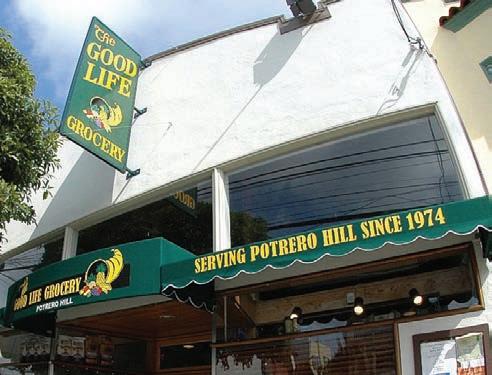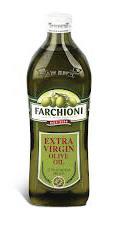












Under the Potrero Avenue Streetscape Project, the City and County of San Francisco proposes to implement a series of infrastructure changes along Potrero Avenue, from 17th to 25th streets. The project is supposed to improve pedestrian safety and public transit along the busy avenue. But at a fall open house, roughly 30 residents expressed concerns about the loss of parking under either of two proposed project options. In response, the City has “reshaped the proposed designs,” according to an email from the San Francisco Department of Public Works (DPW), with a new alternative that
removes less than half as much parking as originally proposed. The new design, which hasn’t been finalized, will be presented at a November 7 open house.
“We heard from residents,” said Cristina Calderon Olea, DPW project manager. According to Olea, the new option focuses improvements at intersections, reducing the loss of parking spaces. Under the option, 28 spaces would be eliminated, some of which may be reclaimed along adjacent streets.
At the fall open house, the City
suggested removing 79 parking spaces. A separate southbound bus lane would be added from 17th to 25th streets, and the existing northbound bus lane from 24th to 21st streets would be removed. The bike lane on the avenue’s northbound side would be separated from vehicle lanes by a two-foot buffer, under one option, while the southbound side would feature the City’s first-ever combined bus-bike lane. The other option would retain an unprotected bike lane on both sides of the street.
The new proposal may please Claudia Flores, who said her family would be worse-off under either of the two original options. According to Flores, the parking changes would have made it more difficult for her nephew, Marc, to access the Muni bus he rides. And she’d have a harder time getting her mother to the hospital. “The consequences to us in the neighborhood are not really being thought of,” Flores said. Marc has cerebral palsy, which can cause seizures, and confines him to a wheelchair. Flores is concerned that the proposed changes to the avenue will cause drivers to honk at the bus Marc rides because it will block traffic coming off the freeway.
Flores’ mother has frequent asthma attacks, and is too frail to walk far. Under the two options previously proposed, Flores said she’d lose the parking spaces in front of her Potrero Avenue home, making it difficult to transport her mother to the hospital. “I think this

“If the architect isn’t made aware of his role as a servant of humanity and of the broadening problems which this implies during his
scholastic career, there is a very small chance that
he
will be inspired to the highest levels once he is engaged in practice.”
HA RL A N MC CLU RE , Journal of Architectural Education, 1955.
Architect Timothy Pflueger, born in Potrero Hill in 1892, left a lasting architectural imprint on the City from a career that spanned from the 1920s to 1940s. Pflueger designed the Castro and Alhambra theaters, the Transbay Terminal, the Golden Gate International Exposition, City College of San Francisco (CCSF), and such entertainment institutions as Top of the Mark, the Patent Leather Bar at the Saint Francis Hotel, the Fairmount’s Cirque Room, and the Olympic Club.
Pflueger had no formal training in
architecture. After years of working as a draftsman, in 1920 he passed the licensing examination to become a certified California architect. Pflueger mastered a range of design styles over his career, making him a versatile designer and architect.
Pflueger’s collaborations with the artists of his day anchored his designs. As a founder of the San Francisco Museum of Modern Art, Pflueger commissioned Mexican muralist Diego R ivera for the San Francisco Stock E xchange. R ivera explored the role of art and technology in society at the Exchange, themes that re-emerged in his Pan-American Unity mural in the Diego Rivera Theater building at CCSF.
By 1929, Pflueger was an established leader in the development of California-style Art Deco architecture. His crown jewel was 450 Sutter Street, the
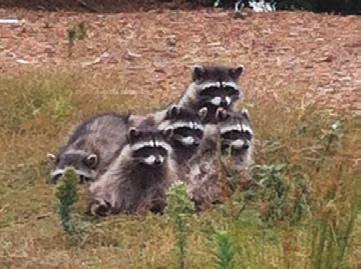 By L I z MELCHOR
By L I z MELCHOR
Dan Burkhart owns and lives in a four-unit building at the corner of 17th and Arkansas streets. Every week, he says, his tenants send him text messages: the raccoons are back. The last text was accompanied by a photograph of four sets of eyes; two adults and two baby raccoons peering through his tenant’s transom window.
With two small children, Burkhart has been concerned about his wild neighbors for some time. “They are big, about the size of a medium dog. Raccoons are supposed to be dangerous, the claws are supposed to be big. And they are brave. You shine a flashlight and clap your hands and they just stare at you,” he said. He generally sees the critters between 8 and 11 p.m., and speculates that they’re attracted to the pet food some of his tenants and neighbors leave outside. While Burkhart and his tenants have had no physical encounters with raccoons, he’s had to repair siding on his house damaged by the animals’ clawing.
According to Jamie Ray, who runs San Francisco Rescued Orphan Mammal Program, or SF ROMP, Burkhart’s experience with raccoons is typical, including his fears, which her organization is trying to alleviate through education. If a San Franciscan calls 311 or Animal Care and Control (ACC) to complain about raccoons they’ll generally be referred to SF R OMP’s hotline, 350.WI L D, where volunteers give advice on how to live peacefully alongside urban wildlife.
While raccoons may look scary, they don’t tend to carry diseases threatening to humans. It’s been decades since any mammals — other than a handful of bats — have tested positive for rabies in San Francisco. “It is a misconception that if wildlife is seen dur-
While devices have gotten more efficient, most Californians use electricity in pretty much the same way their parents did, turning power-needy items on and off with a switch, without much thought. Electricity is a means, not an end.
But on the other side of the meter a fundamental transformation is occurring, one that’s as profound as society’s pivot towards organic food and a sharing economy, or Dogpatch’s resurrection from San Francisco’s industrial heart to its technology brain. Where once fossil fuel power plants were virtually the only option for producing electricity, today solar, wind, and other renewable sources provide roughly one-fifth of the power conveyed by Pacific Gas and Electric Company and the state’s other two large utilities. Within well less than ten years renewables’ share will jump to one-third.
This change has occurred not because of market forces — monopoly utilities are largely exempt from free enterprise but as a result of public policies. Starting in 2002 California implemented a series of laws that pushed renewables into the state’s electricity supply system. The success of these mandates, just ten years later, is a testament to the powerful ability of politics to make things better, a lesson that shouldn’t be ignored. In an era of angry federal government gridlock, California’s energy achievements offers a renewable ray of sunshine that illuminates our elected officials’ and supporting bureaucracies’ ability to get things done.
BY STEVEN J. MO SS
The emergence of renewables and other clean technologies has done more than reduce the grid’s environmental impacts. It has fundamentally disrupted utilities’ business models. We no longer have to be dependent on a massive “spoke and wheels” electric system, in which we pay large sums of money to support vast fossil fuel or nuclear power plants that pump electricity through a sprawling transmission and distribution system. Instead, a series of energy-generating bundles—a mix of solar and wind, supporting by a diverse set of storage devices that can range from ice, newfangled water wheels,
Police, Fire, or MedicalRelated Emergencies: 911
Non-Emergencies: 553.0123
Bayview Station
Main Line: 671.2300
Watch Commander (Lieutenant’s Desk): 671.2325
Captain O’sullivan, Direct: 671.2303; Cell: 590.1698
Beat Cop, Marquita Booth: Marquita.Booth@Sfgov.Org
Beat Cop, Mike Chantal: Michael.Chantal@Sfgov.Org
and batteries—are emerging that have the ability to reliably energize clusters of homes and businesses. An important element of the new electricity era mimics the sharing economy emerging for vehicles, lodging, and even pet sitting, in which those who are willing to avoid using electricity for a few hours are occasionally paid to do so as a way to keep overall demand in check.
Opportunities are emerging to comfortably modify the way we live our lives to accommodate a more su tainable future. For instance, solarenabled parking lots could be dedicated to electric vehicles, which breath in and out of a community-based grid depending on supply and demand, turning ecologically problematic garages into environment-friendly living batteries. Technologies low - power strips and timers — and high - communicating sensors — can manage the timing of electricity use in a way that matches emerging time-variant tariffs, which reflect the underlying costs, environmental and otherwise, of providing power. We’re moving past the place where living ecologically is the purview of the very rich or the very poor, to mainstreaming a green energy grid.
The needed technologies are fast becoming available for even greater reductions in California’s dependence on fossil-based generation, plausibly getting to a fossil fuel-free era by the end of this century. But we won’t reach that point unless we continue to choose the right pathways. State regulators and utility managers aren’t so different from ordinary consumers; they’re used to switching a power plant on or off when it’s needed, favoring relatively inexpensive—for now—natural gas facilities. Likewise, 100 years of investment in a government-protected, profitable approach to doing business, whether it’s taxicabs or power purveying, doesn’t change easily. Reducing the state’s dependence on combustion-based electricity by one-third in two decades will be an achievement worth celebrating. Cutting it another third could take even less time, if we make the right choices, something we’ve proven that we’re quite capable of doing.
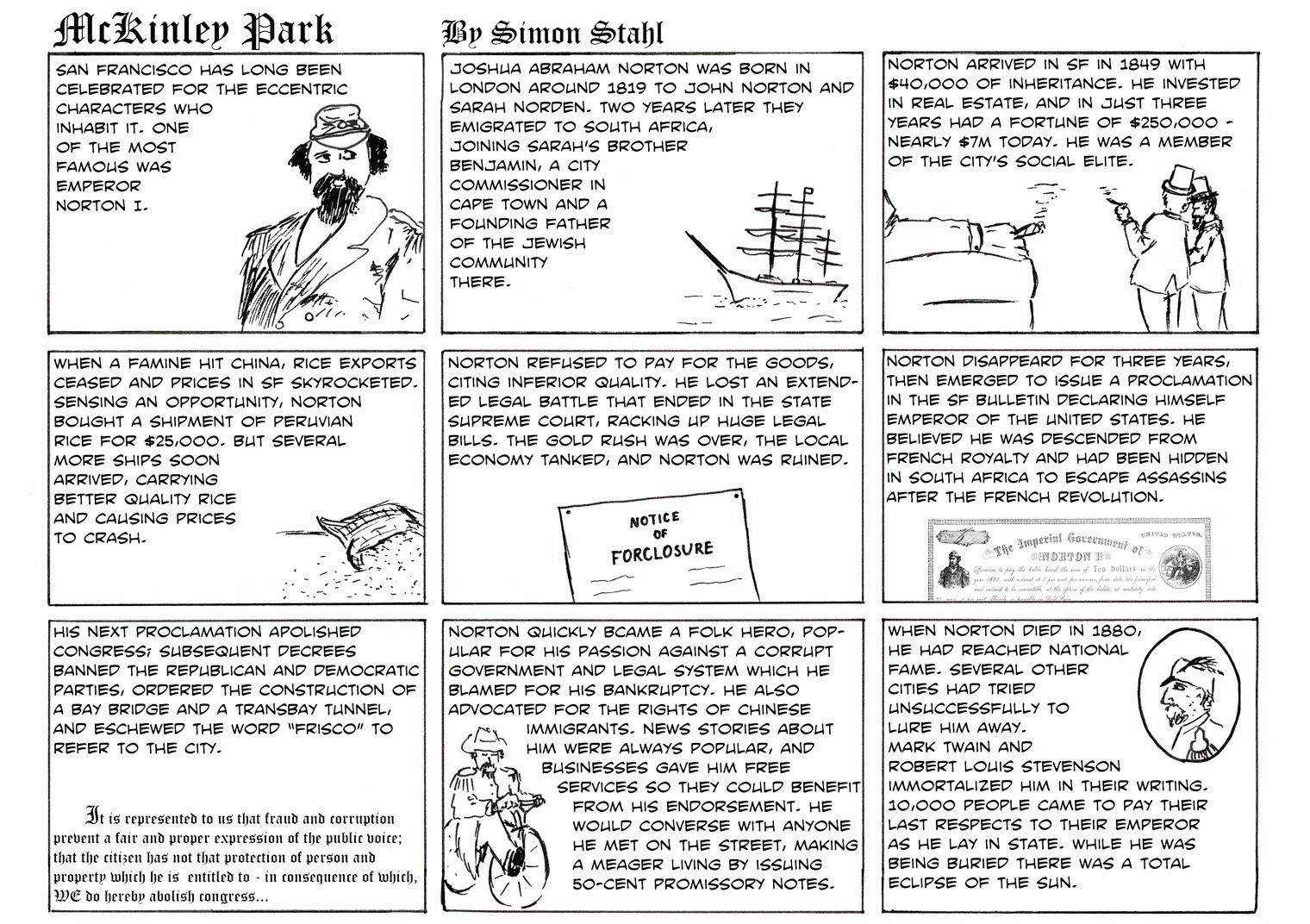
The Eastern Neighborhoods Plan, the culmination of a decade of analysis, negotiation and community process, represents a grand bargain between the City of San Francisco and our neighborhoods. It purports to balance redevelopment of formerly industrial areas and population growth with neighborhood wariness of additional density in an area historically under-served by City infrastructure.
The Plan has wobbled, however, in implementation. The surge of development hasn’t brought the resources necessary to accommodate new residents. Certain infrastructure changes—such as rerouting Muni’s 22 and 33 lines—have indeterminate time-lines and uncertain net benefits. Wholly unaddressed issues—lack of a public middle school on the Hill, for example — are even more concerning. As we see new building foundations being poured, we also see clearly where the Plan has fallen short.
At the Potrero Booster’s October meeting, our executive committee presented reforms addressing the Plan’s flaws and ways to further align the incentives of developers and the City with existing neighborhoods to ensure the Plan’s ultimate success. These reforms would close planning loopholes for

Editor,
future development projects:
While the Plan increased height limits, heights were set relative to the surrounding area. Developers may currently build to their fully permitted heights, and then add mechanical equipment, elevator penthouses and other building systems on top. We propose that the entire building, including its mechanical systems, fit within the zoned height.
The Plan provides for commercialand neighborhood-serving, streetactivating spaces. Residential demand has resulted in developers proposing “flex units,” or spaces which may be either residential or commercial. As the residential value of such a units exceed their commercial value, flex units result in less commercial space. We propose that at least 40 percent of first floor frontages be dedicated to commercial use.
During the Great Recession, impact fees were reduced to spur additional development. Development incentives are no longer necessary; we propose that impact fees for new projects compensate for their full impact.
These reforms would also mitigate the impact of projects currently in the
Thank you for the “1601 Mariposa Street to Undergo E nvironmental Impact R eview”, in the October edition. R elated California says that in response to neighborhood concerns they’ve “offered” to undertake a focused environmental impact review, one that would be limited in scope. While the View portrays this offer in their article as very generous, the type and scope of environmental review performed at 1601 Mariposa isn’t up to R elated to decide, influence or offer. The requirements for reviewing impacts at 1601 Mariposa will be mandated by San Francisco’s Planning Department.
In the article, Mr. Westberg, from R elated California, claims that hazardous materials at the property don’t pose any danger, despite substantive risks identified in their own initial studies. Mr. Westberg seems willing to take the risk of exposing neighbors and students at L ive Oak, International Study Academy and Kipp to asbestos, benzene and other materials. This risk isn’t Mr. Westberg’s to evaluate. Again, as with the environmental impact review, it’s the responsibility of the Planning Department to identify all risks before any construction begins at 1601 Mariposa, as well as to determine whether or not these risks can be mitigated In fact, documented hazardous risks from underground tanks led the San Francisco Department of Public Health in 1998 to issue a certification limiting 1601 Mariposa
L ast month two San Francisco Park and Recreation rangers ticketed dog owners who were allowing their animals to play unleashed in E sprit Park. The open space is viewed by many Dogpatch residents as being a spot to allow their pets to run free, and is advertised on R ec and Park’s website as a location to “romp with your dog,” but, in fact it’s an on-leash play space. District 10 Supervisor Malia Cohen is currently considering options to reorient the open space to better serve both humans and animals...
The San Francisco Department of Public Works denied AT&T’s application to install a Unverse box in front of Daniel Webster Elementary School on Missouri Street. The decision, however, can be appealed.
Street to commercial use until additional environmental analysis proved beyond a doubt the site’s safety for any other type of development, including residential use. To date, there are no final studies indicating that the 1601 Mariposa site does not pose potentially serious health and safety risks.
A full EIR provides comprehensive and forewarning — or cautionary — information about a building site. It covers not only what can be seen from above ground, like traffic, but also what can be seen below ground. Any developer who advocates for less than a full EIR for 1601 Mariposa demonstrates poor ethics and a severe lack of concern for the community. R elated California and its team of executives are knowledgeable and experienced about building policies. The company’s “offer” to perform a focused EIR is underhanded behavior that’s being used to misinform our community.
Join Grow Potrero R esponsibly to let Supervisor Malia Cohen and San Francisco Planning know that Related California’s development plans for 1601 Mariposa must be stopped.
Holly Friedman, 18th Street Editor, A lot of discussion has taken place regarding R elated California’s proposed mixed-use housing and retail development at 1601 Mariposa Street. We appreciate the View’s presence at
The Mariposa-Utah Street Neighborhood Association (MUNA) is appealing the San Francisco Planning Department’s “mitigated negative declaration” (M N D) for Sia Consulting’s proposed six story, 75-unit residential building at 480 Potrero Avenue to the San Francisco Board of Supervisors. Under the M N D, the project’s environmental impacts will need to be addressed, but it was deemed to not have significant adverse impacts. MU NA disagrees, and wants Sia to undertake a complete environmental impact review of their proposal. According to the association, the M N D fails to account for impacts on the historic Verdi Club; doesn’t provide an adequate analysis of parking and transit issues; fails to analyze the effects of shadows from the new building on nearby parks and public ways; and doesn’t evaluate whether the development would fit with the neighborhood’s character. MU NA is also concerned that the M N D doesn’t account for the impacts of digging into 16 feet of serpentine rock, though Don Lewis, environmental planner, Planning Department, said that the MND provides mitigation measures for this element. MU NA has collected roughly 170 signatures from residents supporting an EIR on the project.
It’s going to cost millions more than expected to restore and re-purpose Pier 70’s crumbling historic buildings. Orton Development, which last year was awarded the rehab contract for the shipyard—not to be confused with massive new development efforts being led by Forest City — has asked the Port Commission for an almost one-third bump in subsidies, from $58 million to $74 million. The cause of the cost increases: “additional building repair complexity after further due diligence and analysis,” according to the Port’s executive director, Monique Moyer. Orton is responsible for reenlivening six buildings, spanning 267,000 square feet, some of which date to the late-1800s. Much of the increase may be covered by unused funds from a 1992 bond for seismic retrofitting of unreinforced masonry buildings, to be paid back with interest over 20 years. As a result of the hefty price tag, it’ll be years before the Port receives any rent from the site, though it, and Dogpatch in general, will benefit from spiffed-up structures housing offices, light industrial uses, and restaurants.
Forest City is looking for new uses for a one-acre site at Illinois and 20th streets, behind the American Industrial Center, where Affordable Self Storage is currently located. Last month the developer released a request for proposals to utilize the space for the next several years while it undertakes the environmental review and planning process for the larger site. It could host public art, a beer garden, mobile retail venue, farmer’s markets, urban beach, newfangled carnival: pitch away!...Pier 70 hosted Ghost Ship last month, an annual event that emerged after Halloween in the Castro died from over-popularity in 2006, attracting a bit too many ghouls. In its stead, the Space Cowboys and Pete Glikshtern produced a well-appreciated artistic event at the pier’s Building 12, with the ghosts of creative shipwrights and artists from a former time happily dancing to a new beat. The City continues its southside tilt, towards Dogpatch, with the high-tech, creative crowd sliding towards the waterfront.



community-speared open space at the base of the 18th Street pedestrian bridge.
“Our goal is to make this a nice place to walk under,” said Dianne Bates, a Potrero Gateway Steering Committee member. Bates, a Vermont Street resident since 2009, got involved in the project two years ago, when she received an email from Jean Bogiages, another Steering Committee member, who has led park improvements efforts around 101 for the past several years.
Bogiages, who has lived on Utah Street since 1972, chairs MU NA, a neighborhood association that includes residents of Mariposa, Utah, and 18th streets, as well as Potrero and San Bruno avenues. MU NA was partly responsible for creating the Fallen Bridge Park, so Bogiages knows the ins and outs of creating an urban park, though she’s modest about her involvement. “I call all the meetings, but there is a group of people and the team is pretty engaged,” said Bogiages. Eight Steering Committee members have worked for the past two years to create Potrero Gateway Park.
When some San Bruno residents complained about the lack of a sound wall on parts of 101, with no response from City Hall, the project emerged to include a wall and extensive greenery. Bogiages turned to Walter Hood, a landscape architect professor in the graduate school at the University of California, Berkeley, for ideas. “We needed a landscape plan, and we
Hood made the project the target of the Thomas Church Memorial Design Competition that his students enter each year. Their projects all focused on ideas to change 17th Street’s landscape and its surroundings. “They didn’t give those kids any financial limits. If you want to get depressed just look at all the cool ideas we can’t do,” Bogiages joked. “But we looked at all of them and said “what are the most important things we would like to see from these?”
The committee realized that they needed to hire their own landscape architecture firm, and settled on BION IC, a local firm. Over the last few months they’ve been holding design meetings to perfect the plan. Currently, it includes a low “living wall” consisting of plants on the San Bruno side of the freeway, which will serve as a sound wall, reducing noise pollution; cultivating native vegetation; widening sidewalks; increasing lighting; adding art installations; and the possible inclusion of pop-up businesses housed in cargo containers, like those in Hayes Valley, which could be occupied either by existing Hill enterprises or newcomers. The goal is to make the area safer, more enjoyable, and more frequented.
Bates, whose day job is in advertising sales, has enjoyed the process of planning a park. “It was kind of cool to interview all the landscape architects and learn about City agencies working together. It has been great to see the

community interested and coming to the meetings,” she said. Even Bogiages, a more seasoned community organizer, has been learning new things from the San Francisco Parks Alliance, a nonprofit that’s been advising the Committee and serving as its fiscal sponsor.
Once the Committee has a final plan and rough budget, which is expected this month, they’ll need to raise the money needed to pay for the project. Bogiages was hesitant to specify an amount without the final plan and budget being in place, but said it’d definitely be under a half a million dollars. Bogiages said AirBnB and Anchor Steam have expressed interest in contributing to the effort. Whole Foods said they’d allow the Committee to participate in its bag donation initiative, in which customers can divert the dime they’d otherwise pay for a bag to a charity.
Community response has been positive. Well-attended meetings have been held in a space donated by the
Russian Gospel Church, at 17th and Utah streets. Greg R odriguez, who works at Therien and Company, which was located at the corner of Vermont and 17th for more than 25 years until it relocated a year ago to be closer to the design center, was excited to hear about the plan. “I just think the foot traffic will be great for the little businesses there.”
For more information, www. potrerogatewaypark.org
PLAN from page 3
planning pipeline:
• As a check on neighborhood character, we propose that a committee of neighborhood residents—whether the existing Citizens Advisory Committee or otherwise—review and provide feedback on projects. If a project doesn’t receive community approval, then a supermajority vote of the Planning Commission would be required for the project to proceed.
• Development in the Eastern Neighborhoods will result in significantly increased property tax revenue. We propose that a fraction of the increased revenue be dedicated to an Eastern Neighborhoods Infrastructure Finance District, providing dedicated funding for the area’s infrastructure needs.
• Metering development, and pacing it with infrastructure, would prevent development from overshooting available resources. We propose that market rate development be restricted unless needs in transit, public schools, affordable housing and open space are fulfilled in lockstep.
• Last, we propose that the Board of Supervisors regularly review the Plan to affirmatively determine that enough infrastructure to support new development has been built. If so, then development may continue apace. If the Board finds inadequate infrastructure, then a moratorium on permits would halt
PLAN next page




PLAN from previous page
building until infrastructure catches up, or the impacts of development are otherwise abated.
Development in the Eastern Neighborhoods must not be a freefor-all land run. We should demand responsible growth; we believe these reforms move us in that direction. We look forward to a broad discussion on reforming the Plan with our neighbors, elected officials and City departments. Your participation is important. We seek your input and encourage you to join us in pouring the foundations of healthy, thriving Eastern Neighborhoods.
In last month’s “The Goodman Building Artists to Show Work at Open Studios,” artist Anahid Aslanyan’s name was misspelled, and the group photograph shown was taken by Onyx Williams. Likewise, the Eastern Neighborhoods Citizen Advisory Committee didn’t approve an in-kind agreement for $2.1 million for street improvements at Eight and R ingold, as implied in last month’s “Short Cuts,” but rather denied that request and suggested that $750,000 to $1 million might be considered if the applicant could find some matching funds. The View regrets the errors...
RACCOONS from Front Page
ing the day, it must be sick or rabid,” said Deb Campbell, ACC spokesperson. According to Ray, raccoons may travel during daylight hours in search of food or shelter. The animals typically live in trees, and are commonly seen near parks, but when they have babies can nest in crawl spaces under homes while they raise their young. They’re omnivores and opportunistic eaters; they like whatever food they can get, including pet food and garbage.
According to Ray, the stare-down behavior — which Burkhart’s tenants witness weekly, and many SF ROMP hotline callers interpret as aggressive — is actually the raccoons freezing in fright. They’re watching the humans to make sure they aren’t going to hurt them. Once they realize they can go about their business safely, they will, she said.
So far in 2013 there’s only been one reported incident of a raccoon biting a human, in contrast to numerous dog bites, according to ACC. That incident occurred when someone tried to intervene in a dog and raccoon fight.
“We live in the City but share the environment with wildlife: raccoons, opossums, birds, butterflies. They are native here. R accoons eat mice and rats. They are part of the healthy ecosystem, so they clean up. Yes they have that little bandit mask, but they are not evil.” said Ray.
While they may be San Francisco natives, they can become nuisances when they take up residence in an area. Burkhart got so frustrated with the
numerous raccoon visits that he called a trapper, something a lot of people do, according to Ray. But a couple of weeks after the trapper removed the animals, they were back. “At a little over 200 bucks, I realized I couldn’t just throw my checkbook at it,” said Burkhart.
According to R ay, trapping isn’t the solution. Raccoons look for food in a two- to five-mile radius from their home. “If they are bothering you, you need to address the problem behavior, not just remove the animal. If you have something that is attractive to one animal, it will be attractive to another,” said Ray.
California Law requires trappers to kill all animals they trap. But Ray said that it’s common for trappers to mislead potential clients, telling them that they’re going to relocate racoons once they trap them, which is against the law. A cheaper and more effective solution, she said, is “exclusion;” eliminating the attractants. Simple do-it-yourself exclusion techniques include not leaving out pet food, closing dog doors at night, and, if there’s a cat door, making sure it’s raccoon proof. For more complicated issues, such as Burkhart’s siding being clawed, R ay said metal stripping can be put on the house and painted the same color to prevent raccoons from scurrying up. Other, more complicated, solutions are available from Kelly Creps of Better Than Trapping.
Ray recommended clapping hands loudly and counting for five seconds before letting a dog out into the backyard at night. Turning on a light isn’t going to scare a raccoon away, but noise will. While dogs love chasing the
critters, according to R ay, raccoons don’t attack dogs unless it’s a mother protecting her babies.
SFROMP has a website with videos and audio about urban wildlife, www.sfromp.org. Call ACC for a sick or injured raccoon, a dead animal, orphaned young, or any wildlife in distress.
LETTERS page 3
many of the community meetings, and your efforts to fairly report the community dialogue. In this vein, I’d like to address many of the misconceptions that continue to circulate.
As proposed, 1601 Mariposa is a LEED Silver mixed-use development that will replace the MacKenzie Warehouse and a parking lot currently full of diesel buses. The plans call for 320 residential apartments — including 46 affordable units— and 9,000 square feet of retail space, split into separate buildings. Given the eclectic nature of the area, our design approach, by local architect David Baker, employs the intentional use of different materials and patterns to reflect the neighborhood’s unique street frontages. Our goal is to reflect the differences in the neighborhood block by block, specifically to avoid creating a uniform, monolithic structure.
One of 1601 Mariposa’s hallmark features will be its beautiful, publicly accessible greenway, which will allow for open space and pedestrian access from Mariposa Street through to

According to a November 1912 issue of The San Francisco Call — a newspaper that once claimed Mark Twain as a staff writer — that year a Mrs. Chatham gifted four and a half acres of land to the good people of Potrero Hill, to be used for a playground. A hard-working group of Hill residents went to work filling in a large pond in an area around 17th Street, and raising money to construct a playground and clubhouse. Thus Jackson Playground, nee Jackson Square, was born.
This 101-year-old gift marked the first of several homegrown efforts to make Jackson Playground a place for all generations to enjoy. According to the 1912 paper, it was “the largest and most beautiful playground this side of Chicago.” Bay Area Sports Hall of Famer Anthony ‘Tony’ Lazzeri was among the first to enjoy the park, honing his baseball skills there before playing in the major leagues from 1926 to 1939, including in seven World Series. L ou Spadia, for whom the clubhouse was renamed in 1997, grew up playing ball at the park, and ultimately became the general manager and team president of the San Francisco 49ers.
By the 1980s, however, Jackson Playground had fallen into disrepair. The clubhouse and playground equipment were old and unsafe; crime rates in the neighborhood were notable. Hill families were just as likely to avoid the park as use it, creating a void in accessible outdoor space and kid-friendly community hubs. In 1993 a group of neighbors formed the Potrero Hill Parents Association (PHPA), a network of families that now boasts more than 600 members, to swap child raising tips and organize community-building activities. One of PHPA’s first projects was to tackle the park’s decline.
Tapping into San Francisco R ecreation and Parks’ Open Space Funds, as well as private donations, PHPA raised enough money to pay for the playground improvements that remain today, including American Disability Act-compliant structures, new
and benches, and a
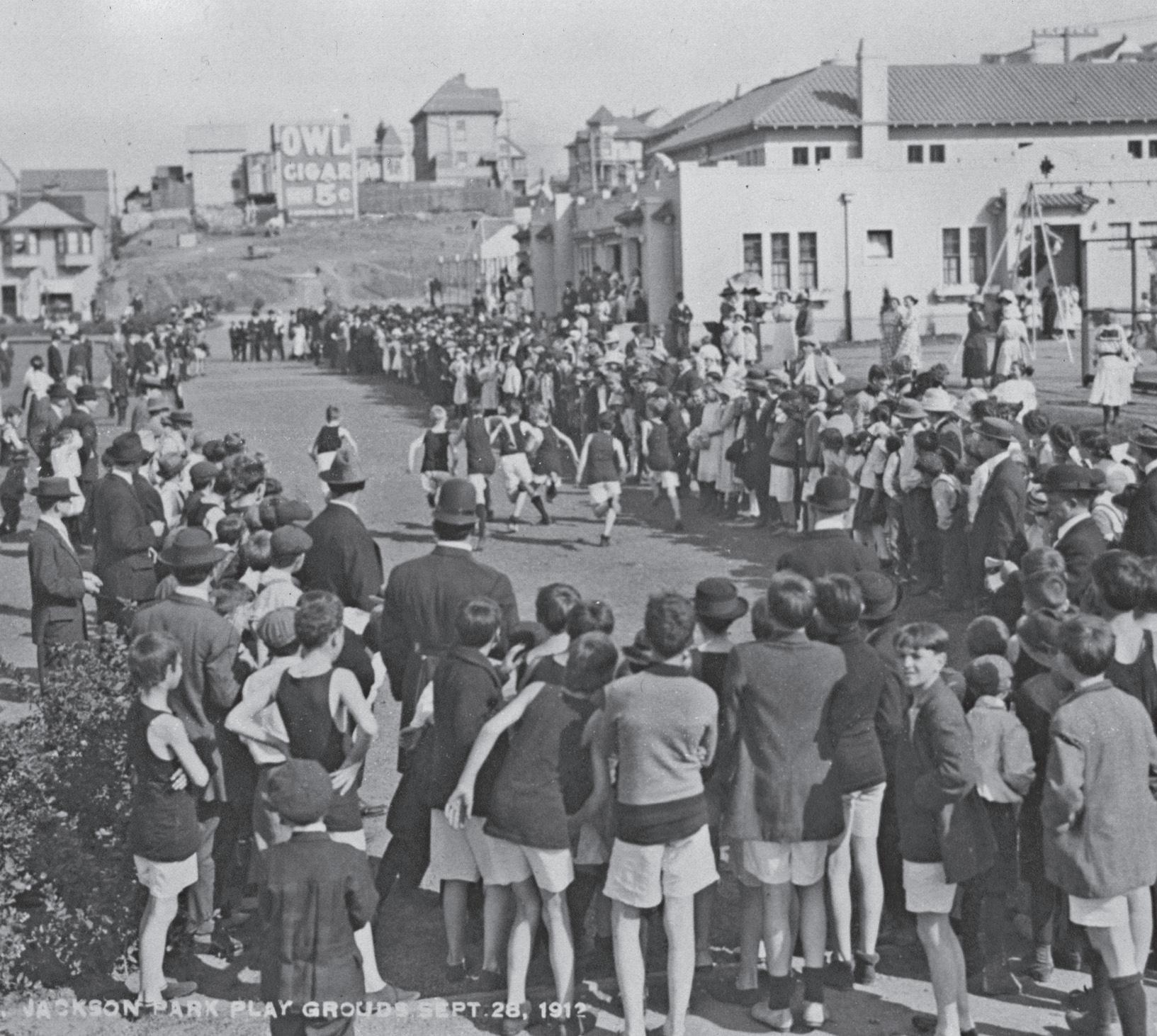
embellished
tutelage of
Josh Sarantitis. Willie Brown, then mayor, declared May 1, 1999 “Jackson Park Day;” hundreds were on hand for the ribbon cutting at the new playground. Today softball teams — mostly


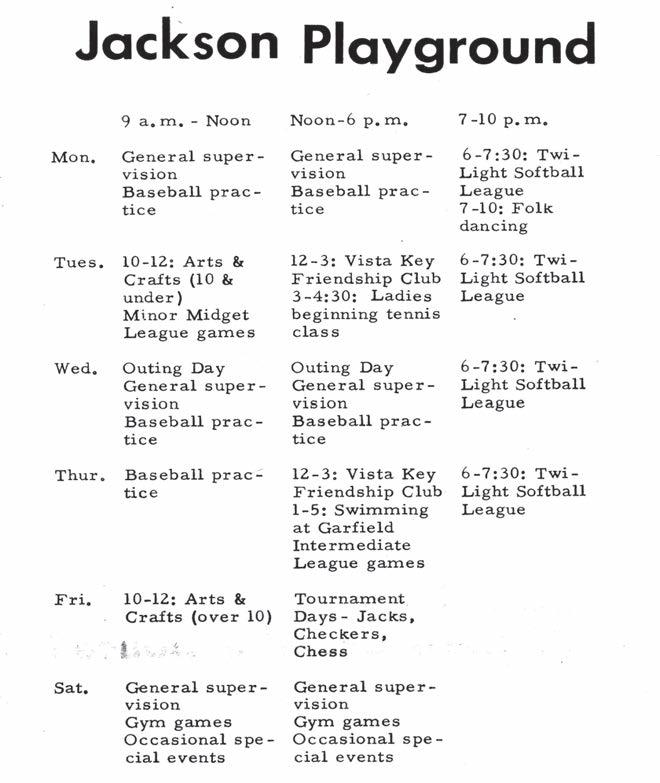








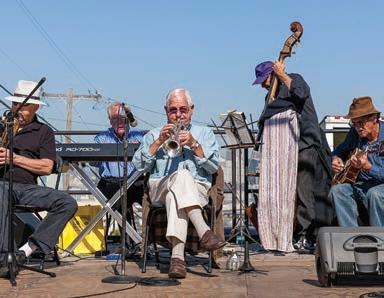

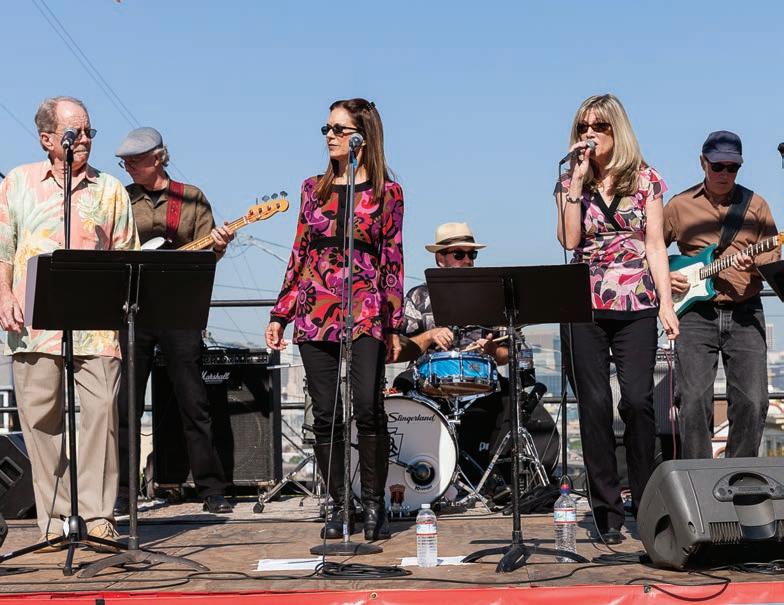



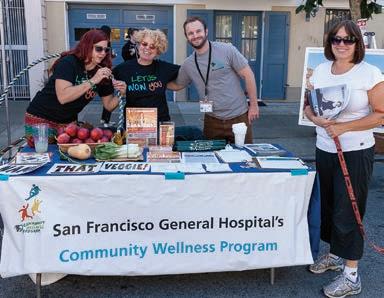
from outside the neighborhood — continue to use the baseball diamonds, their fans cheering from the bleachers; tennis and basketball players enjoy courts that were freshly resurfaced and restriped last summer; volunteers weed the organic garden, sponsored by L ive Oak School, which is located across the street from the park; and kids scramble around the playground.
Still, a little more than a decade after the last playground remodel, the park remains under pressure, particularly with several new high-density residential developments planned or under construction within a handful
of blocks of the open space. Used hypodermic needles have recently been found in the playground’s sand box, as well as a crack vial left under the benches near the basketball courts, prompting concerns by parents and others. Broken bottles, animal feces, and used condoms are regularly discarded in the park. The restrooms





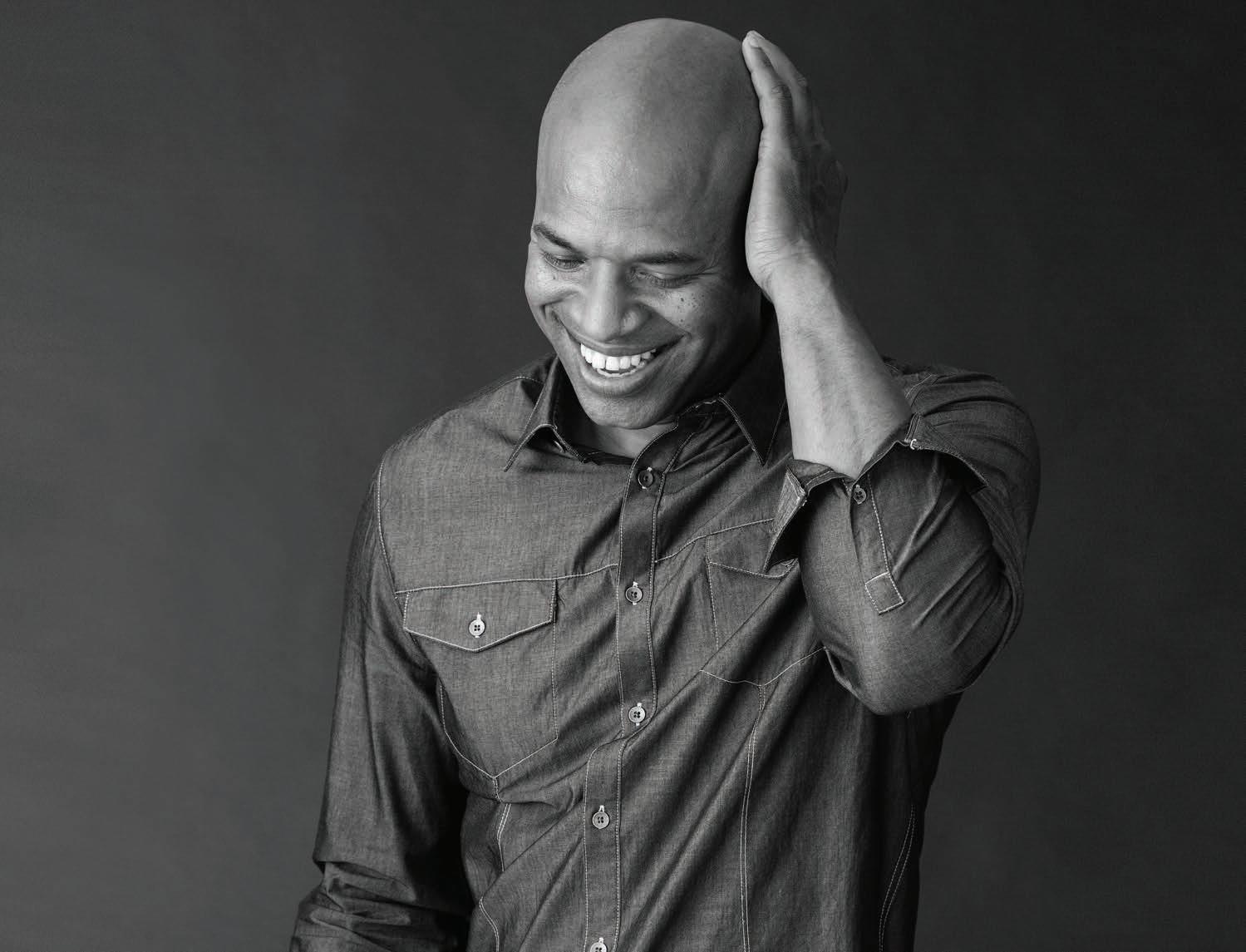



The spirit of collaboration is baked into NextSpace’s DNA. “We call it the ‘ NextSpace E ffect,’ and its pretty powerful actually,” said Diana R othschild, who manages the company’s Vermont Street location, which opened last summer. “From the way that we designed our 15,000 square feet co-work space, to the way we plan programming, NextSpace encourages our members to interact. From weekly lunches, to memberonly events like NextTalk, hosting innovative leaders to speak to the interests and needs of our members.”
When R othschild, then a mother of a newborn, and soon-to-be father R yan Coonerty, one of NextSpace’s co-founders, met in Monterey at a Clinton R enaissance Weekend in 2011, they got to talking kids. R othschild saw how important a new model of childcare is to emerging co-working spaces, where members share a physical location and office infrastructure. It’s a model that’s favored by Bay Area entrepreneurs, independent workers and freelancers active in the tech, creative and biomedical industries.
Rothschild teamed with Coonerty and his partners to offer NextKids which provides child care for infants to 36 month-olds whose parents are N extSpace members. “When I founded NextKids, I visited co-work spaces around the country, and I realized, San Francisco is the hub of where a lot of innovative business models are springing up, many entrepreneurs want to be in the heart of the tech boom in San Francisco, given how close it is to Silicon Valley,” R othschild said. “San Francisco is a leader in the shareable economy, and also has one of the fastest growing mom-entrepreneur scenes in the country.”
NextKid is just the right perk for two-parent creative and tech professional families who don’t want to sacrifice their finances so one parent can anchor the home. Mom or dad can work next door to their child, taking a client call or meeting in one of NextSpace’s light and airy conference rooms. It’s more professional than a coffee shop, or muting a call to answer a five-year-old’s plea to read

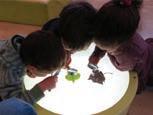
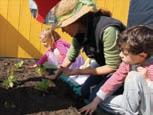
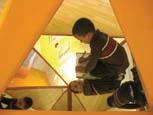


a book one more time. NextKid has partnered with two of its members, Fresh Baby Bites, a seasonal, organic, freshly-sourced baby food company founded by two San Francisco moms; and E arth Babies, makers of a compostable diaper and service.
The company currently has 1,200 members in it co-work space community, which spans three San Francisco locations, Silicon Valley, Venice Beach, Berkeley, and Santa Cruz. NextSpace offers a “Galactic membership” with access to all of its co-work locations. Ninety percent of N extSpace members say that they’ve experienced productivity improvements. Seventy-nine percent report beneficial collaborations with NextSpace coworkers.


NextSpace sees itself as pioneering a national Workplace 2.0 model. The company’s newest investors agree. L ast summer NextSpace acquired the eclectic Chicago coworking community The Coop, and received a $500 million investment from Chicago developer Lakewest, Inc. and angel investor Jeff Carter, among others.
NextSpace owners Caleb Baskin, Coonerty and Jeremy Neuner see expansion as the natural next step for the company, which was launched in Santa Cruz in 2008. At their original location, the owners developed an understanding of the co-work community and its needs, refining their vision as the company expanded into Silicon Valley and, later, San Francisco. NextKids wants to grow alongside N extSpace. ‘‘I definitely envision NextKids being nationwide and, hopefully, international,” said R othschild.
Although 2005 is the last year for which data is available, at the time there were 45 million independent workers in the U.S., representing 30 percent of the workforce. Given the changes in the economy over the past eight years, this number has likely increased.






18th Street. This will transform this historically industrial site into a community corridor, and will include a central plaza that may be used for neighborhood gatherings, such as farmer’s markets and community events. Our retail is intended to be used by small, neighborhood-serving businesses to create an intimate streetscape that will be enjoyed by current and future residents.
As long-time professionals in the Bay Area, we understand the challenges of creating new homes in San Francisco and the region. Put simply, 1601 Mariposa is part of a larger Citywide plan to accommodate growth by building much-needed housing, particularly on under-used industrial parcels. Nevertheless, we expect the community to participate in the dialogue about how new development will affect their neighborhood, and we welcome the community’s input as this project progresses. We firmly believe 1601 Mariposa can address the City’s need to responsibly accommodate growth while also celebrating and enhancing Potrero’s unique character.
R egardless of one’s position on the project, we ask that individuals please evaluate their stance based on correct information. We were at the Potrero Hill Festival sharing information and soliciting feedback, and will continue to be active at public forums and presentations.
Lydia Tan, 1601 Mariposa Development Team
Editor, “Growth Coming to the Hill, L ike It or Not” (October) presents Potrero Hill residents with two options: accept more growth in Potrero or encourage transit and height limit changes in the western parts of San Francisco.
There’s a third option. Large areas of Bayview are underutilized and underdeveloped. Bayview is ripe for the development that Potrero cannot handle. In addition, many residents welcome additional development so long as it’s environmentally responsible and supports Bayview’s middle class. I encourage concerned Potrero residents to work with Bayview-based organizations, such as B R IT E (britesf.org), to find ways to encourage transfer of excess development from Potrero to Bayview.
The article correctly states that proximity to transit is a major factor in determining the locations of new developments. If the Muni T-L ine turns around at 19th street and the Bayshore Caltrain station remains underutilized, high density developments will be forced to concentrate in Potrero.
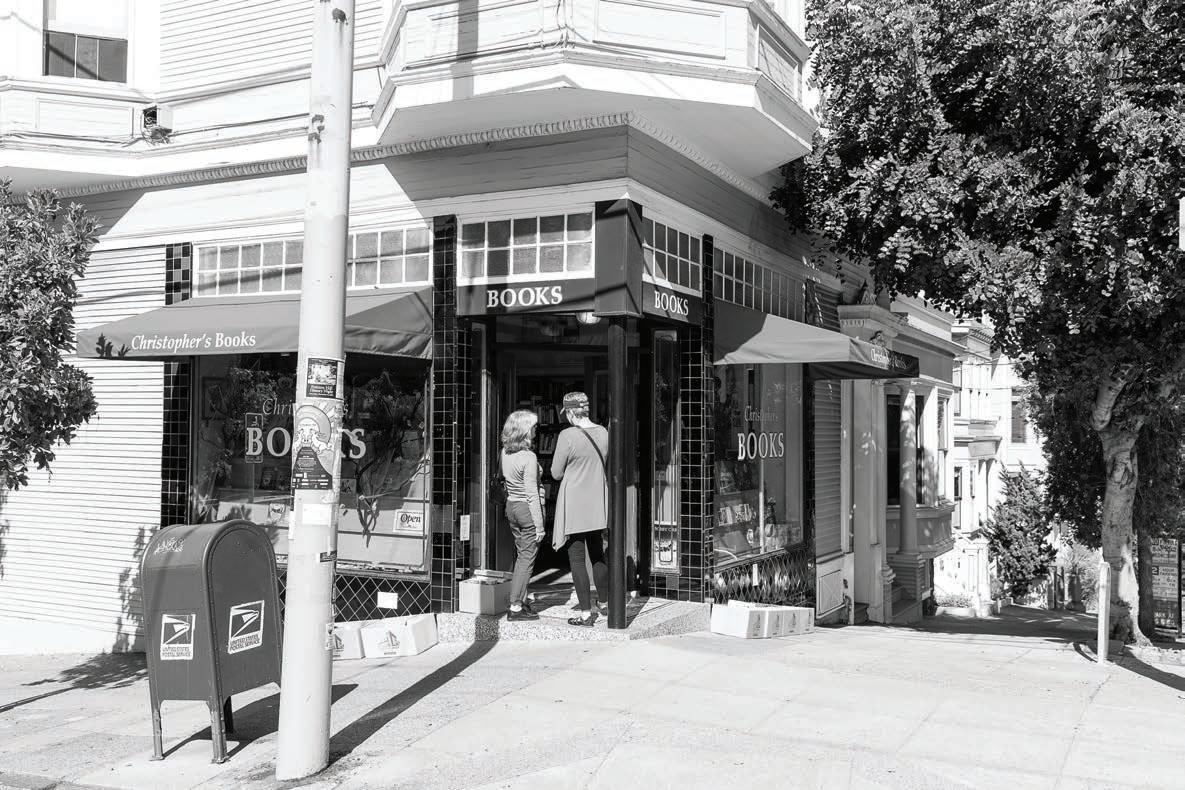
community of literary artists. Nearby Alley Cat Books also features a large gallery.
However, if Potrero residents who want sensible development partner with Bayview residents to improve the quality of public transit, we may be able to redirect some projects from areas that are already overly dense to those that are underutilized.
Jonathan Germain, Revere Avenue
Adobe and Modern Times are managed as collectives, without a hierarchy or permanent manager. Although this made it difficult to identify individuals in authority to respond to questions from the View, casual conversations with store staff suggested satisfaction with their new locale. “We love the neighborhood,” said Emiko Yoshikami of Modern Times, which, in a nod to the community, has added a Spanish language section to its offerings. “We have been around for 40 years and happy to still be in the Mission and serve these local patrons.”
“Though there are not as many people on 24th in the evening as there are on 16th and Valencia, we’ve been able to draw a lot of people to our new location and have been doing well so far. I believe that a big part of the draw is that we have a lot of interesting events happening in the new store, and are getting better at marketing these events. We are a cooperative now, with 14 members regularly working to better the store, and with all those people comes an influx of energy and a diverse range of talents to help keep the store going. As far as the other bookstores on 24th Street, we’re excited that we’re all there together to support one another.
“We were worried about the foot BOOKSTORE page 14

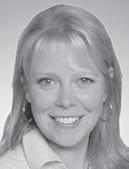

This
In
like a free report on the value of your home,
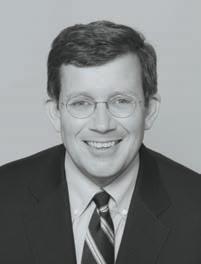

Joel Selvin never intended to become a reporter. But after he dropped out of Berkeley High School, in 1967, a family friend helped him get a job at the San Francisco Chronicle as a copy boy. Two years later, at 22, his first cub coverage of a local concert was published by the newspaper.
Thirty years in, after filing some 5,000 articles that covered the local evolution of rock music from the Grateful Dead to the rave scene to Third E ye Blind, Selvin didn’t exactly intend to emerge as a book writer, either. Yet with more than a dozen books on music and music culture published and more in the works, the Potrero Hill resident will eventually have to come to grips that he’s a professional author.
“Well, I’d hate to drive a cab,” said Selvin, whose living room is a wall-to-wall library of music and pop culture works on artists from Bob Dylan to Bob Marley. Even with a well-seasoned bibliography that includes a New York Times Best Seller — the Sammy Hagar vehicle, Red: My Uncensored Life in Rock — Selvin remains unsure what the process of writing a book entails. “I was in newspapers since I was 22,” he said. “That’s all I knew.”
In the 1980s, Selvin was covering five shows a week for the Chronicle , including a heavy rotation of local notables like Tower of Power and renowned acts like Bob Seeger and Prince. It was perhaps the sheer volume that improved his writing. “It became more interesting to me,” he said. “But I think I was 40 years old before I thought, ‘Hey, maybe I should figure out how these sentences work’.”
In the 1990s and 2000s Selvin gravitated toward harder-edged stories, going beyond concert coverage
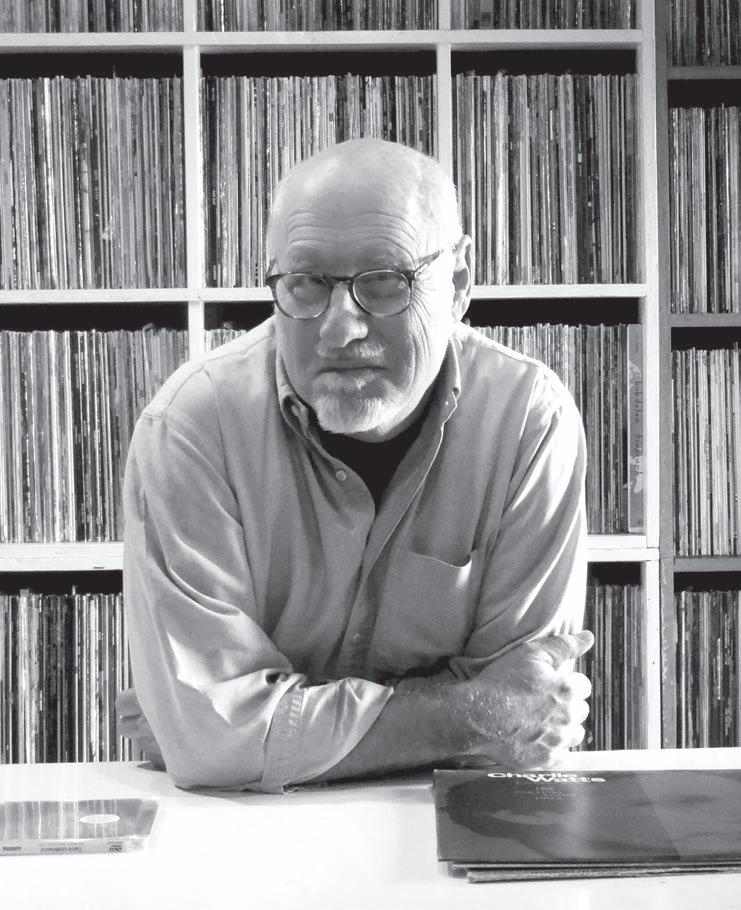
to long, contextual articles that dug into culture and personalities, such as the story of Tubes keyboardist Vince Welnik’s suicide. In 2009, feeling disenchanted with the increasing dominance of shallow show business in the music scene, he retired from his position as the Chronicle’s pop music editor.
“I left at the right time,” he said. “The role of pop in conversation had died down, and I felt flummoxed as to what else I could contribute.”
Having already stretched his reportorial efforts into longer articles, as

well as contributing to a handful of books, Selvin set out to transition strictly to long-form writing. He began by relying on the same tricks he’d used in journalism: heading for the public records — “Public officials have to talk to you,” Selvin said — and relying on three decades of music industry connections. He took a lot of cues from sports writing; like sports, music is a pastime that people share a passion around, one in which they root for their people. Bringing to fans with that kind of collective passion the behind-the-scenes stories was a natural extension of reporting on musicians and their music.
Next spring Selvin’s latest work, Here Comes the Night: The Dark Soul of Bert Berns and the Dirty Business of Rhythm and Blues ,
will be published by Berkeley’s Counterpoint Press. Though it will be Selvin’s fourteenth book, this topic isn’t new to him. It represents the culmination of twenty years of work. “I’ve excavated all the material myself,” Selvin said.
Selvin’s fascination with Berns’ life began with the music, which he uncovered slowly through a record hunt for vinyl 45s. E ventually he supplemented those with conversations with Berns’ widow and children. Berns, who is largely unknown to the casual listener today, penned such famous songs as Janis Joplin’s “Take a L ittle Piece of My Heart,” and Van Morrison’s “Here Comes the N ight,” and rose to further renown as a record producer, publisher, and label owner. Throughout his career he wrangled with heart disease he contracted when he was just 14. “It was a sword of doom hanging over him,” said Selvin.
The disease bred a fatalism that likely contributed to Berns’ precipitous exit from the music world. Before he died at age 38, Berns burned his industry bridges so decisively that when Selvin interviewed Jerry Wexler, Berns’ associate at Atlantic R ecords, Wexler said, “I don’t know where he’s buried, but if I did, I would piss on his grave.”
Selvin has gravitated toward such dark material throughout his career. He’s fascinated by characters who find themselves trapped in ethical conflicts, artistic battles, and ironic circumstances. His musical heroes include R ay Charles and Merle Haggard, a couple of characters who grappled with such challenges themselves. Although Selvin says his writing is driven not by artistic impulses, but by the desire to make books that are useful to booksellers, publishers, and readers, his love of the unhappy ending often wins out over what might be more sellable fare.
Selvin’s own life as a writer is following a brighter, if not quite unambiguous, path. “I don’t even know how I’m choosing the next book,” he said. ”I have several different proposals out, but don’t really know what I’ll do. I still hang out with musicians, ask goofy questions, scribble stories down, and I get this repository of lore.” Whatever he calls himself, he’s enjoying it. “It’s the greatest time of my life. I get up in the morning and move a piece down the board.”
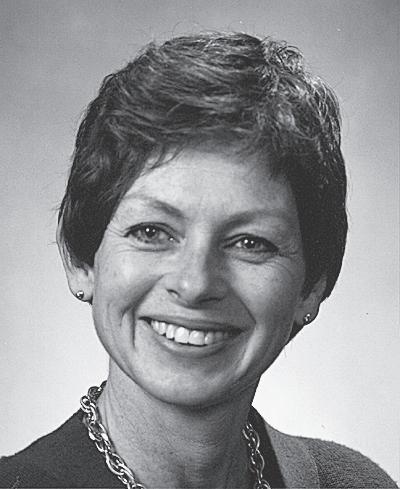
ARCHITECTS from page 8
most important, you have to listen carefully to the constituents — the so-called ‘stakeholders’ — and commit to serving their aspirations as you integrate these into a design idea, and continue to be the advocate of the building until its completion. It’s important to me. I’m still an idealist at heart.”
Julie Jackson and Brian Liles, of Dogpatch-based Jackson Liles Architecture, are leading efforts to remodel the San Francisco Wholesale Produce Market in Bayview. The married pair previously designed the Chinatown YMCA’s interior as part of a remodel of that facility, the Sonoma County Food Bank expansion, and the Friends of Potrero Hill Nursery School, which involved extensive stakeholder dialogue with members of the school community, the school district and City Planning Department.
At the Wholesale Market, Jackson Liles will manage and design the first phase of the warehouse district’s expansion, from 300,000 to 500,000 square feet. The future occupants of the new spaces — which will meet Leadership in Energy & Environmental Design standards — will be involved in the remodel and upgrade design process, which is expected to be completed by the end of next year.
“Our considerations are mainly technical, functional, to ensure each space meets their functional requirements for selling their produce, to consider the dimensions of the loading dock to make sure trucks can deliver. It’s more straight forward in that sense, but we still engage the community so that the design ensures great visibility from the street, that it’s a building they will feel a pride working in every day,” said Jackson.
“I grew up in northern Ohio, Brian grew up in Virginia, we both ended up at the University of Cincinnati Architecture Program, an excellent school for architecture. The cooperative
educational component of the program was one of the best aspects. You work half the year in your field, and the other half of the year we went to school. So, we had a lot of opportunity to work for a lot of different kinds of architects and firms around the country. That was how we actually first came to San Francisco; we both did internships here. So, I think through that we got to see a lot of different types of firms, a lot of different values of firms, different ways that people work and we worked at different firms for a long time,” said Jackson, who shares a Hill home with her husband and two children.
The Architecture Foundation of San Francisco is the guiding force behind “Build San Francisco,” a mentorship program which places high school students with architecture firms so that they can learn real skills and obtain insights into the field, thereby supporting their development as 21st Century architects.
The massive development activity emerging in the Southside neighborhoods offers Build San Francisco students a chance to learn about local planning, and to become part of the design process for Pier 70 and the Hunters Point Shipyard. The program is intended to spur a local ecosystem of architecture and planning capacity, restoration specialties, and foster employment growth.
“I would counsel a young aspiring architect to learn to sketch,” said Payson. “Drawing by hand is an act of observation and interpretation. There is no substitute; it is a completely different activity than drawing on a computer, and probably uses a different part of the brain. It certainly uses the body differently. In essence I think with my right hand, and the pen and the quality of the paper are a part of the process, because that kind of thinking is sensory. It unlocks the ideas and even technical solutions, shows me the path, in the first few hours spent on every design project. Then the computer becomes a place to

test things out to a more rigorous scale. In the last couple of years I’ve noticed that clients are really responding with great interest to hand-drawn renderings and their atmospheric quality. It’s almost as if everyone has had 25 years of computer renderings and computer everything, and now the hand-made is a novelty again.”
We’re planning on collaborating with them more in the future, and have had discussions with most of the other stores in the neighborhood about ways in which we can get book buyers to 24th and brand ourselves as the place to go in SF for books.”
The bookstores have put together a map of the 24th Street book corridor, which includes Mystical Collections, at 24th and Shotwell, and Press Works on Paper, at 24th and Folsom streets. “We are on good terms with Alley Cat and Adobe. We are good friends,” said Yoshikami. “You can never buy enough books.”
Other bookstores are located closer to Noe Valley and the Valencia Street
commercial district. Omnivore Books on Food is on Cesar Chavez. Phoenix Books, on the westside of 24th Street, is affiliated with Dog Eared Books, itself located on 20th and Valencia streets, nearby science fiction, horror, and fantasy specialist Borderlands Books.
Christopher’s Books, located on the Hill’s North Slope, sees the nearby cluster of bookstores as a positive sign. “We think it’s great that there are new bookstores cropping up in San Francisco, and we warmly welcome them into the larger community,” a representative of the bookstore wrote in an email. “I wouldn’t say that we see them as competitors, but rather as allies against Amazon. In a situation where a customer needs a particular book that we don’t have in stock and he or she can’t wait the one or two days it takes us to order and receive it, we’d much rather send a customer to a local store than have them buy it online. Hopefully the establishment of this book corridor suggests a modest reemergence of independent bookstores and the values they represent, and if anything the trend on 24th Street is proof that people still appreciate the interaction that only brick-and-mortar establishments can provide.”








PG&E invites you to a Community Open House to learn about the progress we are making to clean up the former Potrero Power Plant site.
As part of PG&E’s commitment to clean up the site of the former Potrero Power Plant, we have conducted environmental investigations along and near the shoreline in the San Francisco Bay adjacent to the site. On November 20, we will be hosting an open house to share the results of these investigations with the community. The open house will provide an opportunity to meet the project team and learn more about the cleanup work we are conducting at the site of the former plant. We look forward to seeing you there.
What: PG&E Open House
When:
Wednesday, November 20 6:30 p.m. to 8:00 p.m.
Where: Dogpatch Café 2295 3rd Street San Francisco, CA 94107
For more information, please visit www.pge.com/potrero, contact the PG&E Environmental Remediation Information and Response Line at 1-866-247-0581 or email us at potreroinfo@pge.com





VOLUME 38 • NOVEMBER 2013
In 2012, Rebuild Potrero received a Green Connections Grant to identify transportation needs and make recommendations for improving access and availability to transportation for Terrace and Annex (PTA) residents.
T ransportation consultants Fehr and Peers conducted a study identifying existing transportation options and the impediments residents face in making trips to access basic goods and services.
The study includes short, medium and long-term recommendations to improve transportation and accessibility. Below are the initial fndings from the needs assessment:
► Steep grades, large city blocks, and the resulting lack of street connectivity are signifcant barriers to walking, bicycling, and overall trip-making. Seniors and persons with disabilities are particularly affected by the topography.
► Access to basic goods and services is limited. Bus lines serving the site do not adequately meet the residents’ needs. In particular, residents have not found a way to make up for the accessibility they lost when the 53 bus route was discontinued.
► Lack of security hinders residents’ ability to access available transportation services.
► Anecdotal discussions and the documents review suggest that Potrero residents rely more on buses than the general population. As a result, factors that negatively affect

►
(SFCTA)
The analysis also found that residents of South Potrero have better transit accessibility to the Downtown, but not to the neighborhoods around them.
In a future column we will provide an overview of the study’s recommendations.
For more information, visit our website at rebuildpotrero.com or e-mail us at potrero@bridgehousing.com
































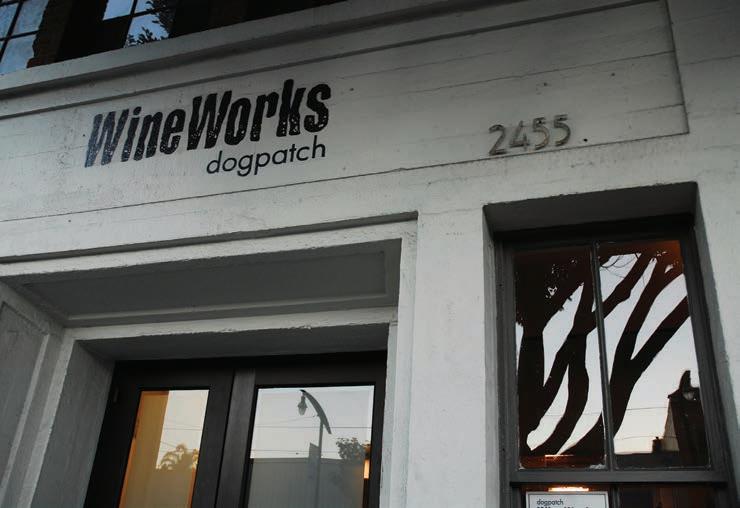
 By CATHERINE HERRERA
By CATHERINE HERRERA
San Franciscans need not own a vineyard in Calistoga or Napa to become a winemaker. Dogpatch WineWorks (DWW), located on Third Street, offers an opportunity for individuals, friends, and colleagues to taste wine, tour an urban winery, or even make a barrel or two, in keeping with one of the City’s longest-standing craft traditions.
“I get grapes from as far north as Mendocino in Anderson Valley, and as far south as Santa Barbara, from San Lucia Highlands. Napa and Sonoma are only an hour away. That puts us in the middle of all the great grape growing regions throughout California,” shared David Gifford, who co-owns DWW with Kevin Doucet. “When people walk in off the street they think it’s pretty awesome when they see the equipment and realize we’re the real deal,” he said.
California winemaking was introduced by Father Junipero Serra as part of the system of missions he developed starting in the late 1700s. San Francisco’s original Spanish settlement, Mission Dolores, skipped planting a vineyard due to the area’s cold, damp climate. But by the early1900s, the City hosted a thriving wine industry of makers and cellars. The California Wine Association lost four million cases of wine in the 1906 earthquake; the liquid in surviving bottles was used to fight the devastating fire that followed.
Prohibition decimated the country’s winemaking industry. In California, the number of wineries dropped from 700 to 100. When the state’s reputation for world-class wines started to emerge in the 1980s, the Bay Area’s winemaking epicenter had shifted north and south, creating the powerhouse wine-producing region that surrounds the City. Today, San Francisco’s cool climate has become a draw for urban wineries, including the Bluxome Street Winery, Vui Winery and Dogpatch WineWorks, which often share expertise and equipment as part of the larger regional winemaking community that encompasses the expansive East Bay Winemakers Association.
DWW melds old-world values with modern equipment to offer expert and

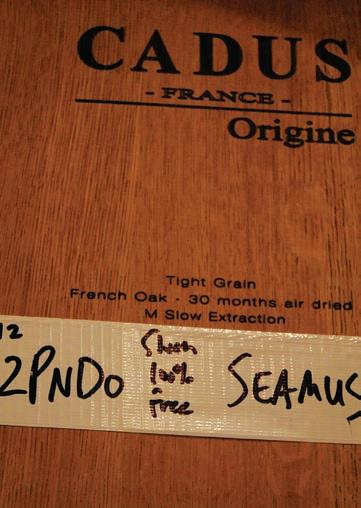
novice vintners the ability to make wine in the middle of the world’s technology capital. Travelers from around the world — including Japan and Finland, and, closer to home, N ew York and Palo Alto — blend alongside local boutique winemakers at DWW’s 15,000 square feet facility. Diners with reservations at nearby Serpentine or Piccino can stop in to sip wine and taste cheese from neighboring L a Fromagerie before dinner. The tasting room occupies an airy 3,000 square feet, with streaming natural light bouncing from white
DOGPATCH WINEWORKS page 19


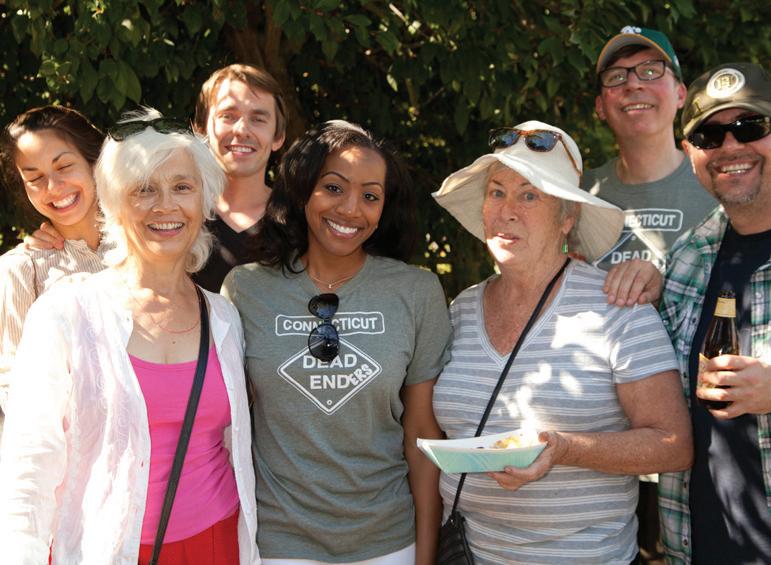
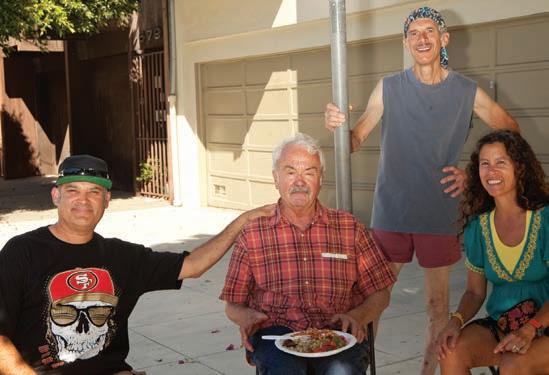
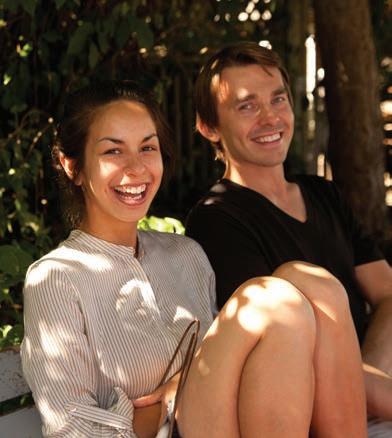
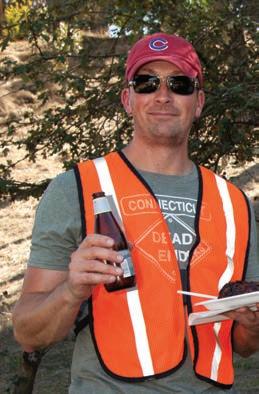


is really bad for us,” Flores said, who was also concerned about the plan’s impact on other seniors and disabled individuals. “I hope the City listens to us,” she said.
To improve safety, DPW wants to install a landscaped median on Potrero Avenue and reduce the length of the crosswalks traversing the street. Chris Pangilinan, San Francisco Municipal Transportation Agency (SFMTA) associate engineer, said the landscaped median would make the avenue look less like a freeway, inducing calmer driving. The shorter crosswalks—up to 12 feet narrower — would reduce the current 82-foot crossing distance, making it less risky for pedestrians to traverse.

hancing Muni’s reliability and on-time performance. According to Pangilinan, dedicated lanes for bikes and buses would be ideal, but the street isn’t wide enough for such separation. Given the limited volume of bus and bike traffic along Potrero Avenue, Pangilinan said conflicts between the two transportation modes will be minimal in a combined lane.
brick walls, warming the cozy couches set among wood furniture reclaimed from Napa fermentation vessels by the design company Heritage Salvage. Tasting room visitors can select from a chalkboard list of an eclectic mix of commercial and crafted wine blends produced by members, local wineries, and under DWW’s label. Prices range from $2 a taste to $14 a glass.
style of flavor, processing and sorting grapes, pressing, and evaluating barrel tastings. Urban winemaking is a collaborative process, often shared by groups of friends over the year or two needed to create a drinkable bottle — depending on the varietals — from the moment the grapes are picked to the tasting of a private boutique blend with a unique label.
Rhode Island Street resident Elliot Schwartz seemed to approve of the proposals. “I feel no one is looking out for me and my kids,” Schwartz said, of the current situation on Potrero Avenue, where he bikes with his son. According to Schwartz, Potrero Avenue has only one bus lane and two very narrow bicycle lanes, in addition to four lanes of traffic. There are already eight lanes for cars on Highway 101, he said, Potrero Avenue needs to be a slow, safe street.
The dedicated bus and bike lane is being proposed in an effort to make bus traffic more reliable along Potrero Avenue’s southbound side, which carries vehicles onto Highway 101. The lane would cut bus travel times by three minutes, Pangilinan said, a savings that’s “off the charts,” significantly en-
Total project costs are estimated at $3.2 million, with most of the funds coming from the 2011 Road Repaving and Street Safety Bond, with additional monies from SFMTA and for road repaving. The proposed improvements were included in the Mission District Streetscape Plan, adopted by the San Francisco Board of Supervisors in 2010. The MDSP’s “goal was to identify improvements to streets, sidewalks and public spaces …,” according to a 2010 draft of the plan. DPW wants to begin project construction this summer, with completion slated for the following summer.
The November 7 open house will be held at San Francisco General Hospital’s cafeteria, 1001 Potrero Avenue, second floor, from 6 p.m. to 8 p.m.
Novice or experienced winemakers can pursue their own methods, or be guided by DWW staff, to craft barrels of private blended wines. Mike Zitzlaff, DWW’s director of operations, has years of experience as head of winemaking at Crushpad’s San Francisco and Napa sites, working with clients to assess their preferred
“We don’t have huge tanks here. We are not producing thousands and thousands of cases. There is a lot of hands-on; we’re paying a lot of attention to individual details and specifics of individual people’s wine trends they want to achieve,” said Gifford. “There is a diversity of people making wine with us, people who are passionate about wine and making. We see late


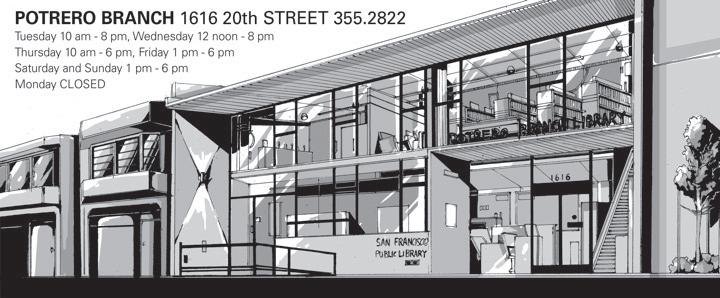
The Library will be closed on November 28 and 29 in observance of Thanksgiving.
PROGRAM S FOR AD U LTS
Recapturing Your Sleep Cycle. L earn to recapture your healthy wake/sleep cycle with holistic foods, herbs and spices. Presented by holistic nutritionist Amy Woodbury. November 26, 4 to 5 p.m.
PROGRAM S FOR TEE NS
Game On! Come play PS3 games on our big screen! We have a selection, but you can bring your own T or E rated games to share. Challenge your friends to determine who is the ultimate gamer! Snacks! Ages 10 to 18 welcome. Tuesdays, November 5, 12, 19, and 26, 4:00 to 6:00 p.m.
Introduction to SCRATCH. In honor of the One City One Book choice of Little Brother by Cory Doctorow, come to Potrero Branch and learn about SCR ATCH, an online creative learning community where you can create stories, games, and animations and share them with the world! SC R ATCH is based on the computer programming language Python, and is free and easy to use. Program attendees will learn how to sign up for a SC R ATCH account, and get a basic introduction to using the website to create animations. Attendees will need an active email account to sign up for their own SC RATCH account. We’ll have 10 laptops available, and kids can share if all the laptops are being used. SC R ATCH was made for kids ages six to 16. For more information, contact Lisa at lfagundes@sfpl.org or call 355.2822. Friday November 22, 3:30 to 5:30 p.m.
Ice Cream and GAK: Science at the Library. Join the Museum of Craft and Design and Potrero Branch L ibrary in celebrating science month with a dropin workshop exploring polymers and milk science! Mix white glue and liquid starch, and learn the science behind the resulting slime. MCD will show you lots of fun ways to play with your GAK, and we’ll give you a bag of this gooey medium to take home! Your librarian, L ia Hillman, will guide you in making your own ice cream in a bag for instant yummy consumption! Saturday, November 9, 4 to 5:30 p.m.
Baby Rhyme and PlayTime. For infants up to eighteen months-old and their caregiver. November 5, 12, 19, and 26. 1:15 to 1:45 p.m.
Family Storytime. Featuring stories, songs and rhymes. For children from birth to five years old and their caregiver. Thursdays, November 7, 14, and 21, 10:30 to 11 a.m. and 11:15 to 11:45 a.m.
Homework Help. Kindergarten to sixth-grader will receive one-on-one help from our capable volunteers. Need homework support? Drop by the library for free assistance. November 5, 12, 19, and 26, 4:30 to 6 p.m.
Fun Flicks. This film program is offered the second Wednesday of every month and includes short films based on children’s books and stories. November’s films will be Big Henry and the Polka Dot. For children ages three to eight, November 13, 6:30 to 7:15 p.m.
Movie Day: In partnership with the Potrero Hill Family Support Center, we’ll present Karate Kid along with a meal. November 15, 3 to 5:30 p.m.
LI BRARY S PO NS ORE D COMMU NIT Y PAR TN ER SH IPS
Creative Writing Workshop A free class to help you write your own stories, develop characters, and find your unique voice in a supportive and creative environment. Please contact Shevi for more information: sheviros@gmail.com or 602.7961. Thursdays, November 7, 14, and 21, 12:30 to 2:30 p.m.
The Potrero Hill Book Club meets at the library every third Wednesday evening of the month. November’s selection is Out of Cuba: Memoir of a Journey by Regina Anavy Join the discussion on November 20, 7 to 8:30 p.m.
San Francisco Seed Library at the Potrero Branch Library In partnership with the San Francisco Seed Library, the Potrero Branch Library has seeds available for ‘checkout.’ Located on the first floor beneath the staircase.




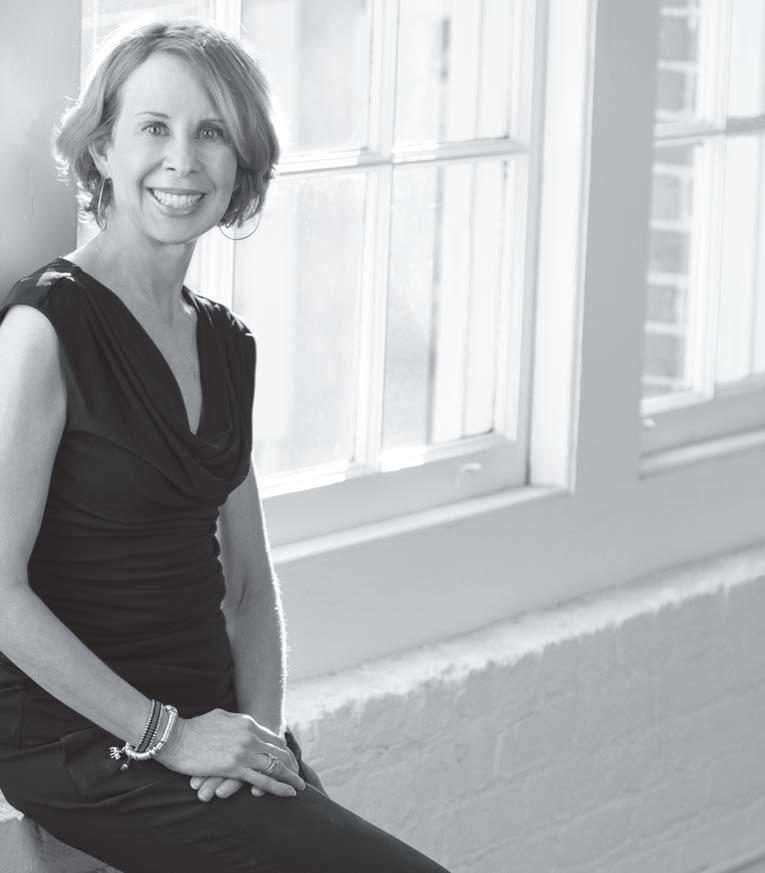








20- to 30-year-old professionals coming in together with a group; there are usually eight to 10 of them. It’s honoring the tradition of sharing a great bottle with friends and then taking it to the next level, making it together. Or we see couples in the late 50s or early retirement. We have groups of 40-year-olds, usually a group of five or six friends.”
“L ast year, when we cracked our first wine, my wife was one week from delivery. Now, a year later, it’s been a very personal, wonderful experience, and to be able to do that with our friends, and get some perspective on how the whole process starts with Mother Nature, and then the final product,” described Jeremy Barry, one of six friends who are expanding to two vintages this year at DWW.
More than half of Dogpatch WineWork’s clients are private label blends made by small commercial or family winemakers, with the number of artisan makers growing each year. Contracts can begin with one barrel, which produces 24 cases, 12 bottles in a case. Barrel prices range from $6,000 to $10,000.
“We have a little motto,” said Gifford. “We’re making wine in the City the hard way, but, with a lot of love. There are certainly easier ways to go about doing this. There is no experience like actually getting involved, rolling up your sleeves and participating, and that is what we provide.”
are in need of updating.
The clubhouse, once home to two full-time directors, has suffered a series of setbacks. A few years ago, Citywide budget cuts eliminated programming at the park. Then, the clubhouse itself was deemed unsafe. Structural engineers brought the building back up to safety codes, but it remains largely closed to the public, save for paid after-school programs, weekend HoopsterTots and private rentals. Current conditions are far from what the parents of 1912 had in mind when they created a space for a piano, dance hall, and many ‘amusements for boys and girls’ in their beautiful clubhouse.
In the tradition of Hill residents before them, a new group of parents has begun meeting to figure out how best to improve this community hub. Calling themselves “Friends of Jackson Playground,” the group is trying to build support for park improvements. Through public meetings, fund raising, and volunteer efforts, Friends plan to develop a community vision of how best to ensure that Jackson Playground is reinvigorated as a safe, thriving, and happy place that meets the neighborhood’s needs.
Friends of Jackson Playground can be reached at FriendsofJacksonParkSF@gmail.com or online at fojp.tumblr.com.
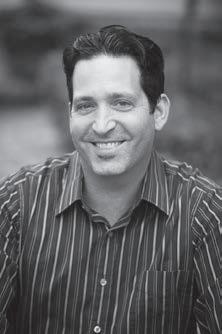


The View asked Hill resident and career expert Mauri Schwartz to answer questions from job seekers.
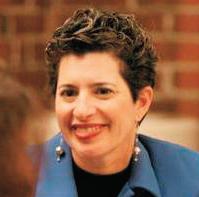
Q: What do you have to say about thank-you letters after an interview? A re people still sending them? If so, when should they be sent; what should I say? I’ve heard that sending a handwritten note is the best way to get the interviewer to remember you.
A: Yes, sending a thank you letter after an interview is a must-do, for both etiquette and professional reasons. I’d guess that fewer than half of interviewees send thank you letters, but that’s no reason for you to shrug it off yourself.
You should write and send a thank-you letter as soon as possible after the interview. Send it via email, in the message portion, not in a separate attachment. While handwritten letters may be a nice touch, one never knows how long it’ll take a letter through the U.S. Postal Service to arrive. A hiring decision is likely to be made before your letter lands in the hands of the interviewer. Furthermore, increasingly hiring managers or human resources representatives file all the documents related to candidates together in a single electronic folder. Where will she file your handwritten letter? I doubt she’d take the time to scan the letter before tossing it into the trash.
To be sure that you have the interviewer’s contact information, always ask for a business card at the end of your meeting. This also ensures that you’ll spell their name correctly. If you interview with multiple people, whether in separate meetings or altogether, write a separate email to each person. If possible include a reference from your conversation with that particular person.
Your letter is yet another opportunity to sell yourself. Here’s what you should include:
• Lead with a basic thank-you to convey your appreciation for the opportunity to meet with her: “Thank you for the opportunity to discuss your account manager position and how my successful sales experience makes me an excellent candidate. [name of company]’s recent rapid growth rate is an exciting challenge; I’d relish the chance to contribute to it.”
• Think back on your conversation with this person and try to remember something you said about your achievements that prompted a positive response from the interviewer. Use this chance to reinforce this qualification: “As we discussed, my career-long success in closing business with large retail corporations, especially Gap, has resulted from cultivating strong partnerships with key decision makers, relationships that I’ll be able to bring with me to [name of company].”
• How many times have you walked out of an interview and realized that there was a much better way to have answered a particular question? Or you remembered something important that you forgot to say in the interview? Use this opportunity to “recoup your losses” by providing that information in your thank-you letter: “When you asked about my experience using CRM software, I described the various packages that I’ve used, including during the past two years with Salesforce. I also wanted you to know that in my previous job, I was recognized as the regional expert and delivered informal training to my co-workers.”
• At the end, be sure to remind the hiring manager of what she said about the next step in the process, what and when it will be: “[name of interviewer], I look forward to hearing from you early next week about the next set of interviews.”
Recently, I listened to an interview of Rosie O’Donnell by Alec Baldwin on National Public Radio. In 1988, when Rosie was still an up-andcoming comic, she flew herself to New York for an audition at VH1. And then she flew home and waited. But she did one more thing that not everyone in her situation might do. She wrote a thank you note to the director who had made it possible for her to audition. He was so moved that somebody wrote him a thank you note that he passed her audition tape on to the person who made the hiring decisions. And she was hired, had the job for two years, and got exposure that was a great boost for her career. If Rosie hadn’t had the talent, she wouldn’t have gotten the job. Writing a thank you letter won’t get you the job if you don’t have the skills, but it can make a huge difference.




November 1 through 18
Art: Homouroboros
The Exploratorium, in collaboration with the Black Rock Arts Foundation (BRAF), will bring Homouroboros, largescale interactive zoetrope by San Francisco artist Peter Hudson, to the public plaza at Pier 15 for a limited engagement. At 24 feet tall, the work’s treelike steel frame and mushroomcloud-shaped canopy is an attention-getter. Eighteen human-sized monkeys dangle from its branches. By pounding on drums built into the base of the trunk, visitors cause the top of the tree to spin, turning the monkeys on their branches into a vision-bending arboreal escapade. Strobe lights at night, and special goggles during the day, complete the Homouroboros experience — a phenomenon of the eye called “persistence of vision” that turns the 18 monkeys into a threedimensional motion picture. The monkeys appear as a single, animated monkey, snatching an apple from the mouth of a serpent slithering down a branch. Close inspection reveals that the mouth of the serpent is in the shape of a human hand. Free. Viewable from 6 to 10 p.m. Exploratorium, In front of the museum, Pier 15. Information: 528.4360 or exploratorium.edu.
Through January 25
Art: In Grand Style, Celebration in Korean Art
In Grand Style celebrates the Joseon dynasty (1392 — 1910), showcasing more than 110 treasured objects that speak of a glorious heritage. In Grand Style focuses on celebrations, festivals, elaborate rites, dance, music and processions. The exhibit narrates and illustrates the history of the dynasty’s 27 kings and its queens through their rituals. The art highlighted in the exhibition was lent to the museum by numerous institutions in Korea and the U.S., primarily the National Museum of Korea and the National Palace Museum of Korea. In Grand Style is based on the exhibition Scenes of Banquets and Ceremonies of the Joseon Period held by the National Museum of Korea in 2009. Admission: $8 to 12. Asian Art Museum, 200 Larkin Street. Information: asianart.org
November 2 through 17
Theater: Driving Miss Daisy San Francisco’s AfricanAmerican Shakespeare Company opens its 2013-14 season with Alfred Uhry’s Driving Miss Daisy. Winner of the 1988 Pulitzer Prize, Driving Miss Daisy is a timeless meditation on race relations in America told through the complex relationship between an elderly Southern Jewish woman and her black chauffeur. Having recently demolished another car, Daisy Werthan is informed by her son that she must rely on the
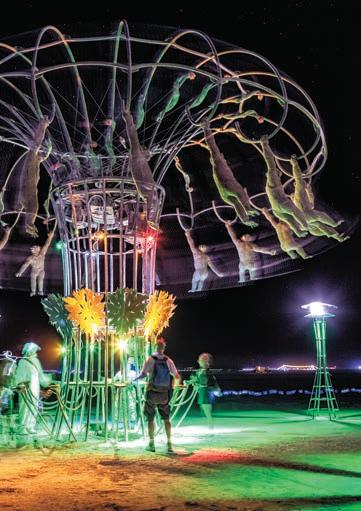
services of a chauffeur, a proud, soft-spoken black man named Hoke whom she immediately regards with disdain and who, in turn, is equally unimpressed with her. In a series of absorbing scenes spanning 25 years, the two develop an unlikely bond despite their mutual differences, growing closer to, and more dependent upon, one another.
$12.50-50. 7 p.m. Buriel Clay
Theater, 762 Fulton Street Information: africanamericanshakes.org.
November 8 through 16
Dance: Give a Woman a LIft Flyaway Productions is proud to announce the world premiere of Give a Woman a Lift, a visually arresting aerial dance created by choreographer Jo Kreiter and visual designer Sean Riley. In an exploration of the meanings inherent in the idea of “going up,” especially as seen through a feminist lens, Give a Woman a Lift affirms the necessity of rising on one’s own steam, rather than waiting for others to push or pull us up. $20-25. 7:30 p.m. Joe Goode Annex, 401 Alabama Street. Information: flyawayproductions.com
Art: Embossing and Packaging Design
Explore heat embossing to create a unique and cost-effective look for branding, invitations and gift packaging. Design cards, tags, wrapping paper and boxes with powder and stamp patterns. Artist instructor: Mashell Ewing. $5-10. 7 to 9 p.m. Includes supplies, instruction, and beverages. For adults 21+. Museum store and galleries open. No walk-ins after 8 pm. Museum of Craft and Design, 2569 Third Street. Information: sfmcd.org
Music: Sea Music Concert Series
Experience the driving rhythms of chanteys and the beauty of seafaring ballads from the wooden decks of the
historic sailing ship Balclutha. Join the celebration of 25 years of outstanding performances of sea music in the park. On tour from his native England, Brian Peters is “A top-notch singer and player, one of the very best performers in the field of English traditional song and music, “ according to Dirty Linen folk music magazine. $12-14. 8 p.m. Balclutha at the Hyde St. Pier at Hyde Street. Information: Maritime.org
Performance: Dan Chan, the Magic Man Chan brings his unique magic and comedy show to The Buddy Club. And there’s no other show like it, weaving magic, comedy, pickpocketing, mind-reading, juggling, escapes, dog tricks, and acrobatics to create the ultimate variety show. Chan was awarded San Jose Magician of the Year, and Best of the Bay by Bay Area Parent $8. 11 a.m. The Randall Museum Theater, 199 Museum Way. Information: randallmuseum.org
Food: The Joy of Mindful Cooking — The Holiday Season Holidays are festive and fun, full of love and joy. Yet, so often, we lose sight of their true meaning as we find ourselves submerged in emotional triggers that make us vulnerable to eating and drinking too much: numerous event, activities, parties; family gatherings; spending money; traveling. In this interactive workshop and dinner, Carley and Kristin will teach experiential practices for cultivating mindfulness, compassion, and gratitude as we cook, eat, and share a table. Menu: pumpkin soup, coconut, ginger, toasted pepita/winter greens, persimmon, pomegranate, feta /roasted farro, shaved Brussels sprouts, fried meyer lemon, fresh thyme/poached marsala pears, whipped creme fraiche . $45 for members, $55 for general public 6 p.m. 18 Reasons, 3674 18th Street. Information: kristin-cole. com.
November 21 through 23
Theater: Dark Kabaret Holidays Paul Nathan (HBO, MTV, Star Trek Voyager) hosts this decadent evening featuring cabaret, variety, and burlesque stars from all over the world: Eden Berlin, from Germany, a member of the German girl band, The Sinderellas (like naughty German spice girls). Paul Dabek, from London, along with Frank Olivier, Sterling Johnson, music by Mark Growden and much more. You will feel like a kid again when Sterling Johnson takes the stage
with his wimsical bubbles: and juggler, klown, Frank Olivier delivers the unexpected. Live music from the world’s sexiest accordion player, Mark Growden and his band of subversive musical geniuses. Each night is unique with different guest stars. On Thursday and Friday RJ Owens takes time away from starring in Las Vegas’ longest running circue show. From $35. 7 p.m. Great American Music Hall, 859 O’Farrell Street. Information: darkkabaret.com
Music: Volti
Concert — Britten and Beyond
Volti San Francisco’s awardwinning, front-edge new music chamber choir embarks upon its 35th Anniversary Season with a look back at the group’s roots in the music of Benjamin Britten to celebrate his 100th birthday, and a look forward with two world premieres. $10-25. 8 p.m. St. Mark’s Lutheran Church, 1111 O’Farrell Street. Information: VoltiSF.org
Fundraiser: Recycle your Computer and Electronics
Recycle most anything that plugs into a wall or is battery operated at this school fundraiser. Computer monitors, TVs, laptops, keyboards, DVD players, rechargeable batteries, light fixtures, ink/ toner cartridges accepted. See GreenCitzen.com for an acceptable electrical items list. Free. 10 a.m. to 2 p.m. St. Anthony-Immaculate Conception School school, 299 Precita Avenue. Information: info@saicsf.org or 648.6008.
Workshop: Breaking Up is Hard to Do
Whether you’re breaking a heart, having your heart broken, or mutually splitting, breaking up is hard to do. Join Julianne Carroll, sex and relationship coach and educator, for a two hour workshop on working through the grief process of break ups. She’ll talk about strategies for healing and letting go, dealing with anger, how to break the news to someone that you no longer want to be with them, and how to handle the rejection when someone breaks up with you. $20. 6:30 to 8:30 p.m. Good Vibrations Polk Street Store, 1620 Polk Street. Information: juliannelovesme.com.

The Insufferables — made up of an eclectic bunch of San Franciscans fronted by singer, band leader and Potrero Hill resident Carolyn Crampton — made their Bottom of the Hill debut last summer, and hope that performance set the stage for more involvement in the local music scene. In June the band issued its first compact disc, the extended play, or E P, Fire Bad!, consisting of four songs, including the catchy “Cats Who Drive Cars” and “Whiskey Dreams.” The group is working on a five-song second CD, to be out by the end of the year.
The Insufferables hope to return to Bottom of the Hill, while branching out to other San Francisco hotspots. They played at The Connecticut Yankee on Halloween and at Neck of the Woods in the Richmond District last summer.
The band formed in 2009, with Crampton on guitar and vocals, her longtime friend Gene Michal, a classically trained musician, on guitar, and Keith, 51, who prefers to go by his stage name, Keith Insufferable, helping on vocals. The three later connected with Ram Fenster, 39, on bass, who brought on Melissa Kang, 33, to play drums. The latest iteration of the band has been together since 2011.
“It was all meant to be,” Michal said. Kang, a Southern California transplant, was “tricked” into playing with the group after Fenster invited her a few times to “come and hang out with our band.” She played on a borrowed drum set until her role was solidified.
The September Bottom of the Hill gig was a pinnacle for the group. “It was a great show,” Insufferable said, adding that they were asked to return. He called the performance a “launching pad” for future success. “We definitely wanted to play there,” Fenster added.
The five members practice once or twice a week at the Navy Shipyard in Hunters Point. When not performing or practicing, all members work day jobs. Insufferable is a bartender at the Attic in the Mission. Michal is a bio-medical engineer. Fenster works at a technology company. Kang is in sales for a vision improvement business.
At first the group only did covers. Now their repertoire includes original material, with all of the band members involved in putting together lyrics and music. “We had to find out how to gel,” Insufferable said. The band’s album covers and posters are made by Crampton, an art instructor at Ex’pression College — which has campuses in Emeryville and San Jose — as well as a graphic designer and illustrator, and author of the children’s book, Rabbit Language, or Are You Going to Eat That? She lives on 18th and Arkansas streets.
“We do it because we love it,” Insufferable said. “It’d be great if we made some money, but it’s so much fun.” The band has grown together over the years; now when they perform we “get in the zone,” Michal said. The members, who vary in age, also come from different musical backgrounds. Michal, with his training, contrasts with Insufferable, who found his voice
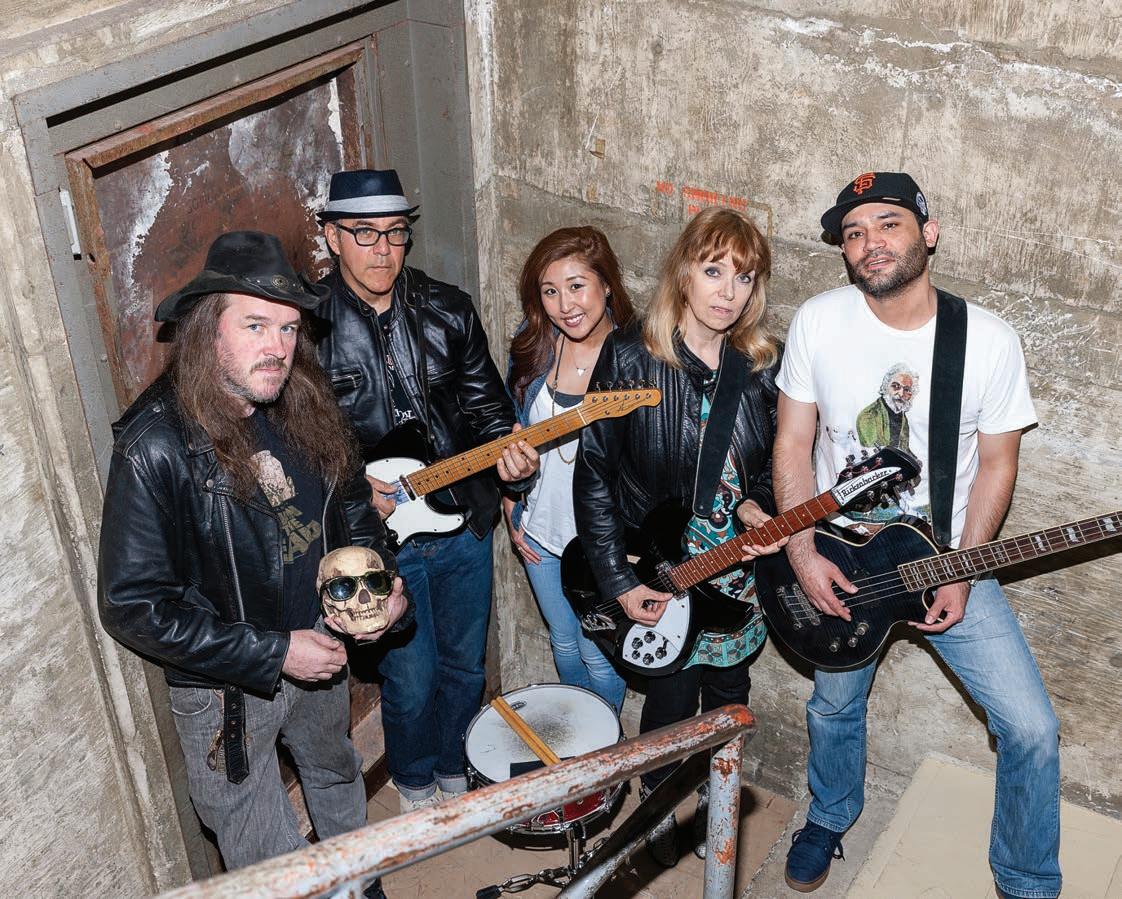
on his own. Crampton has punk rock experience, performing with the Varve and Profalactics in Colorado before coming to the Bay Area. She said being in collaborative all-women bands involved lots of intense discussions, which was good preparation for her latest group.
“We’re kind of the iPod shuffle of bands,” Insufferable said, when asked to describe their sound. Fenster said he labels their music as indie rock with a retro sound, but they’re not a punk band even if they do cover punk songs occasionally.
“Some of our stuff is crunchy, others is jangly,” Michal said.
“If you don’t like one song, you’re going to like the next,” Insufferable added.
According to Michal, many of their songs are story-like and word heavy, but the music has meaning that may not be apparent to the average listener. Many aren’t “politically correct,” but nothing too offensive makes it onto any of the tracks.
The origin of the band’s name has a layer of fuzziness to it. Michal and Crampton claim they invented it to be ironic. Despite differences amongst the members, the group gets along well, with only the occasional spat or moments of friction.
The group reflected on memorable moments since coalescing. Insufferable remembered playing at the Red Devil L ounge on Polk Street, when at one point he realized “we were happy and having fun.” Michal said there was a moment when they were recording their EP tracks at Ex’pression College when he realized how special it was that this assortment of people had come together to make music. “There’s nothing else that has that kind of thing as playing together in an ensemble.” He advised artists to not lose sight of why they play.
R am recounted a dinner at Michal’s house with all the members and recognizing that these bonds were why he had joined a band. Crampton said a poignant moment was when Michal played at Kang’s wedding in 2012, with the entire band in attendance. Kang noted that it would have been unlikely for the members to become friends if not for the music, which “brings us together,” like a family, however cliché she thinks that sounds. Michal said the band has grown and improved over the past two years, and that the many practice sessions together are critical. “We wouldn’t have been as good if we practiced alone,” he said.
The group is looking to do a Southern California tour in the near future, and wants to put together a music video for one of their songs. They have dreams of performing at such San Francisco locales as the Makeout Room and Café Du Nord. In the meantime they’re continuing to practice, record and perform at smaller gigs.
To hear some of the band’s music and get more information: insufferables.com

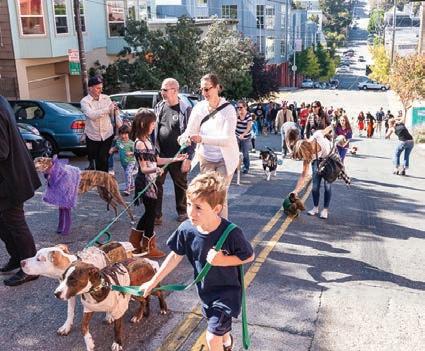
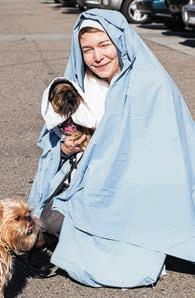

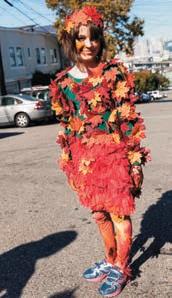

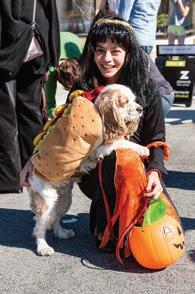








Soothed by music and surrounded by books, Southside residents honored their former librarian, Linda BrooksBurton, at a storytelling program held at San Francisco Public Library’s (SFPL) Bayview Branch. Brooks-Burton died suddenly of a heart attack on September 19 at the age of 51. Last month, friends, family, and community members turned out for “Storytelling: An African American Tradition” to tell tales of dedication, learning and love.
“(As a child) I came here every day,” said Paul Henderson, Mayor Ed L ee’s deputy chief of staff for public safety. According to Henderson, he wouldn’t be in City government if not for Brooks-Burton’s work. Henderson’s family didn’t have money for the books that he wanted when he was growing up, but he could order them from the librarian. “ E very child that walks through that door self-selects success,” Henderson said.
District 10 Supervisor Malia Cohen said she studied for the law school admission test, when Brooks-Burton served as Bayview Branch librarian. “L inda Brooks-Burton made her life count,” Cohen said. And when she interacted with young scholars, she let them know their lives counted too, Cohen added.
Bayview resident and Carver E lementary teacher Michelle Henry Ellis said Brooks-Burton helped her son and his friends win recognition for a report they wrote while high school seniors. Three of the men, she said, went on to Tuskegee University, a prestigious Alabama college founded by Booker T. Washington.
Born in L os Angeles, March 26, 1962, Brooks-Burton moved to the Bay Area to attend Mills College, where she earned a bachelor of arts degree in communication in 1984. Prior to
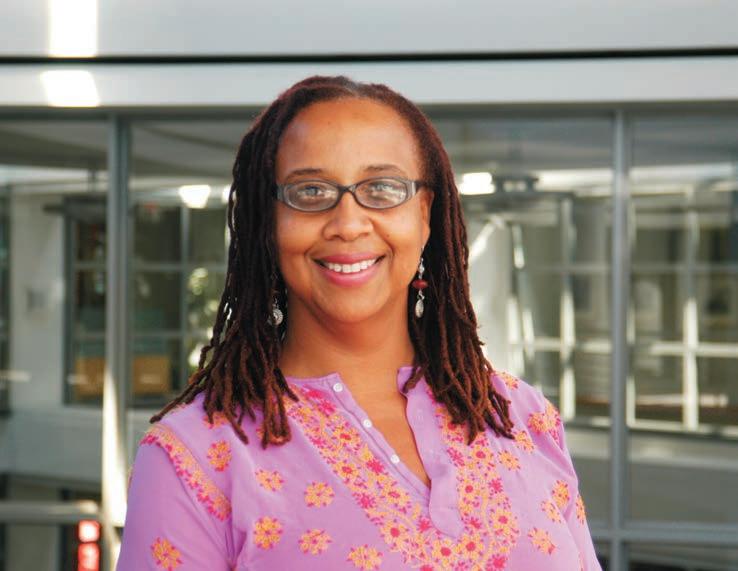
graduating from Mills, she started worked at the SFP L’s West Portal Branch as a library assistant. In 1989, the library promoted her to librarian after she earned a master’s degree in library and information studies from the University of California, Berkeley. In 1995, the library promoted her again, to Bayview Branch library manager, and then again in 2011, to southeast district manager. As southeast district manager, she oversaw library branches in Bayview, Visitacion Valley, Portola, Bernal Heights, Mission and Excelsior.
“The library was her baby,” said her daughter, Jamila Burton, 23. “A place she really loved.”
Others at the dedication agreed.
“She just helped those boys,” said Henry Ellis of her son and his friends.
When the boys visited the library “she was just buzzing around like a bee,”
Henry Ellis said.
“This was her forte,” said Bayview resident Walter Johnson. “She found her passion and she did it. She opened this library to this community. She was the General behind” it, Johnson said, speaking of the renovated Bayview Branch, which opened this year. “The community is in shock. We lost an unsung hero.”
“She can best be described as an activist librarian,” San Francisco’s City Librarian Luis Herrera said. “She was a community builder who was instrumental in starting the “Bayview Unsung Heroes” awards to recognize and celebrate ordinary folks from the neighborhood (who) were doing great things. In addition, her dream for the Bayview library was realized; she was the guiding force behind its success and brought the community together
to make sure this new library was a shining beacon in the neighborhood and in the San Francisco Public Library system.”
Former District 10 Supervisor Sophie Maxwell agreed with Herrera and Johnson. “She was a community person,” Maxwell said. “She was about connectivity and connecting people all the time.” Brooks-Burton saw the connections between the library, gardening, history, families and children, Maxwell said. Brooks-Burton was involved with Quesada Gardens, “a network of gardens, public art and gathering spaces,” according to the organization’s website. She served on the board of Family and Child Empowerment Services of San Francisco, a re-branding of two nonprofits, Florence Crittenton Services and the Whitney Young Child Development Center. And she was the bedrock for the African-American Center at the San Francisco Public Library, said Stewart Shaw, a librarian.
L ibrarians from throughout the City turned out for Brooks-Burton’s public memorial at City College of San Francisco’s Southeast Campus in Bayview. “She was a force in the library,” Maxwell said.
“We mourn the loss of L inda,” Herrera said. “She leaves a huge void in our library family. She was a mentor, supporter and inspiration to her staff.”
In wake of her death, many are calling for the Bayview Library to be renamed after Brooks-Burton.
Surviving Brooks-Burton are her husband, John, and three children: daughter, Jamila, son, Hosani, 21, and daughter, Kalila, 15. In her memory, the family has started an education fund to help a deserving student from the Bayview go to college. So far the community has raised more than $7,000.
“L was for librarian, and L was for love,” Maxwell said.

C ITy AND COuNTy OF S AN FRANCISCO
N OVEMBER 2013 MONTHLy
N EWSPAPER OuTREACH
A DVERTISING SuRVE y
t he b oard of Supervisors is evaluating the effectiveness of o utreach advertising. was the information in this ad helpful and/ or interesting to you? w hat types of articles would you like to see? Please provide your comments at (415) 554-7710 or email board. of.supervisors@sfgov.org. Please include the publication name and date.
O FFICE OF COMM u NIT y I NVESTMENT AND INFRASTR u CT u RE (“OCII”) INVITATION TO BID
o CII will receive sealed bids from California ‘ b ’ licensed contractors for the b uilding 813 Stabilization Project, contract h PS 02-13.
work includes new roofing system, replacement of existing windows and interior doors, installation of new storefront and metal panels, electrical and lighting, and exterior painting within a vacant 250,000 square foot building located at h unters Point Shipyard.
Estimated cost of the work is $3.5 M. t his contract contains equal employment opportunity goals of 25.6% minority participation and 6.9% female participation for each trade.
For bid documents, see http://www. sfredevelopment.org/index.aspx?page=127 or call Kevin Masuda at (415) 749-2508. bid
Date: November 6, 2013 at 2:00 pm.
LOW COST DIVERSITy, SENSITIVIT y AND Cu LT u RAL-C OMPETENC y T RAINING FOR BuSINESSES , E MPLO y ERS AND HOuSING
P ROVIDERS By THE SAN FRANCISCO HuMAN RIGHTS COMMISSION
If you are a business owner or housing provider, educating yourself and your employees about the harmful impact of discriminatory conduct is not only critical to your success, but it will help you avoid expensive lawsuits and promote smart, respectful business and/or housing practices. the frst step towards ensuring that you and your employees comply with Federal, State and local anti-discrimination laws is to
enlist the help of the San Francisco human rights Commission. For a nominal fee, we will provide you with the most up-to-date training available, customized to your specifc needs.
Contact us today to learn how you can reduce the likelihood of expensive lawsuits stemming from unlawful workplace and/or housing practices based on age, ethnicity, sexual-orientation, disability and other protected classes. to learn more about our trainings, please visit us at www. sf-hrc.org


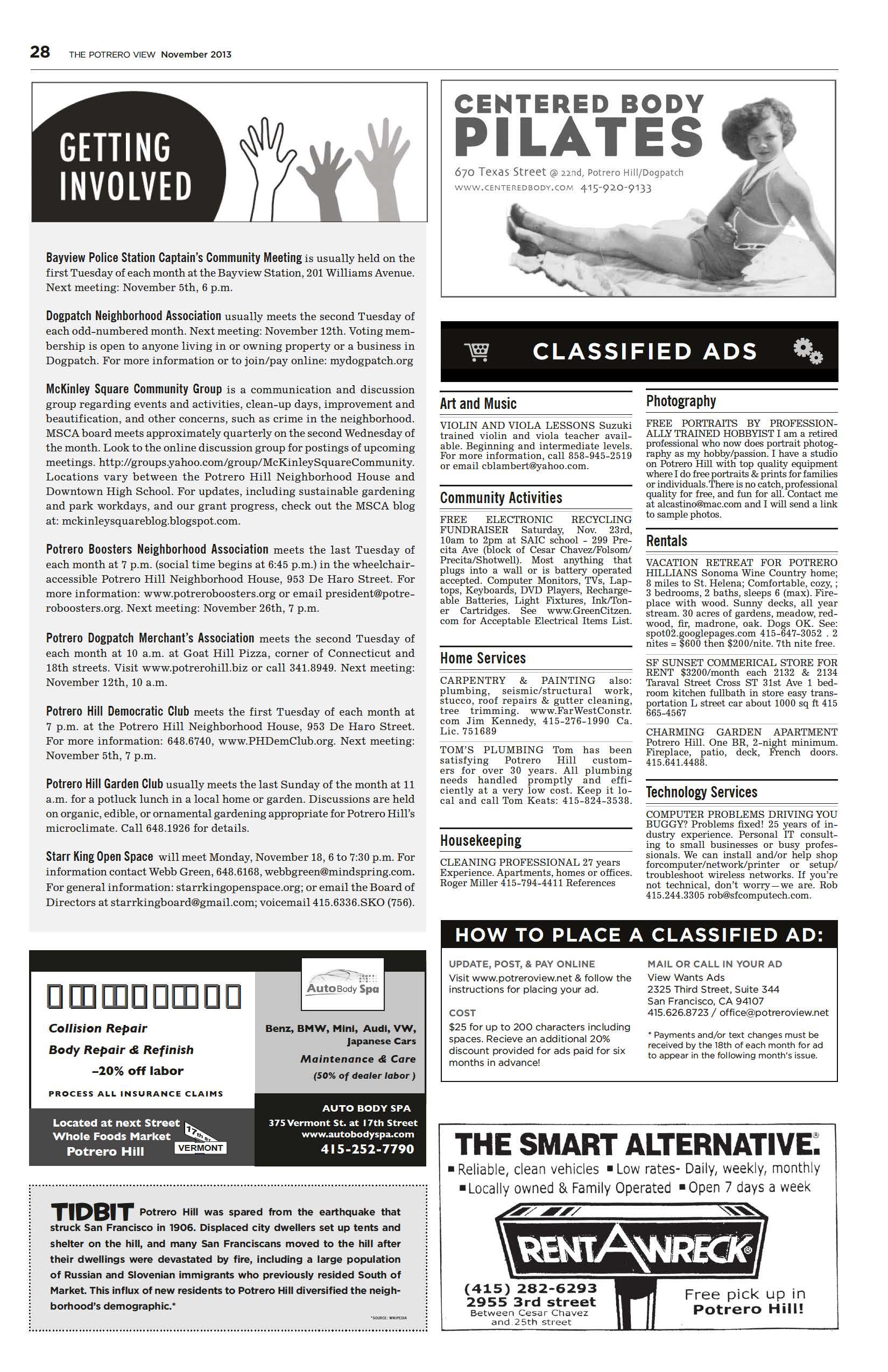
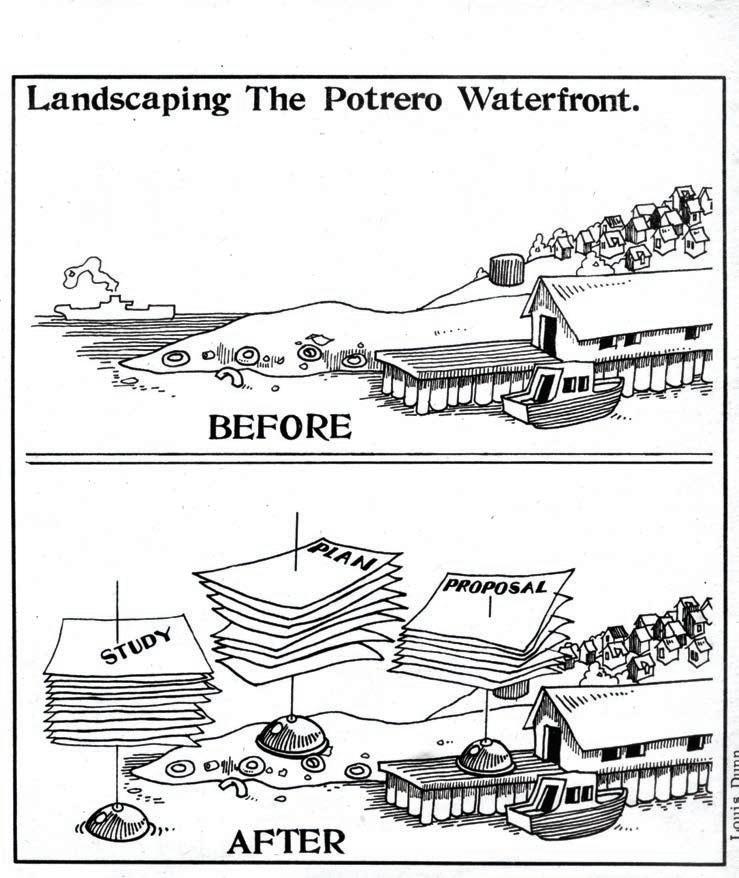
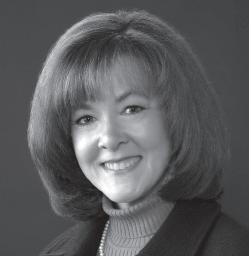
Last month I joined San Francisco Police Department sergeants Dean Hall and Dan Cole on an afternoon “ridealong” in an unmarked police car. After suiting up in bulletproof vests, the sergeants and I started a patrol of Bayview Zones One to Five, which extend from AT&T Park—Zone One—to Candlestick Park, Zone Five. All of the officers who share a radio frequency have number identifiers, and different areas have names to distinguish locations. The sergeants named me “Charlie 101.”
The sergeants, along with backup officers, first responded to a call that turned into a “5051;” a person being held by the State Department of Health Services for an involuntary psychiatric 72hour evaluation. The incident involved a 91-year-old woman who showed signs of being unstable while causing a scene outside of a Wells Fargo Bank on Third Street. An ambulance was called; the emergency medical technician suffered a right hook from the feisty senior, who didn’t want to be hospitalized. SFPD officers handled the situation with patience and respect for the elderly woman.
We toured Bayview as we waited for our next call. According to Hall and Cole, gang violence was prevalent in the area. While riding through the Potrero Annex-Terrace housing complex, which has an unfortunate nickname, the sergeants were called to provide back-up on 25th Street. We arrived quickly to assist two officers who had pulled over a car. Someone had called 911 and reported
seeing a gun inside the vehicle. When approaching the scene, all responding officers positioned their vehicles at an angle with the doors opened, following safety protocols. The passenger granted officers verbal permission to search the vehicle; no gun was found. Hall explained that although some calls are false alarms, each one is taken seriously and thoroughly investigated.
As my tour wound down, the sergeants were called to a crime scene investigation. We arrived at Bayview Park to find a disheveled woman who had reported that she’d been physically assaulted including an attempted rape — and had belongings stolen. The victim described her struggle to escape her attacker, being forcefully dragged and confined behind a nearby shed. A quick search of the area indicated that the suspect had fled. The victim led us to where she’d been confined, and showed us bloodstains, the man’s knife and a red shirt he’d left behind. Police officers searched the grounds for additional evidence and surveillance cameras. The CSI unit was called to assist in the investigation.
An average day in the life of the SFPD is unpredictable, presenting officers with situations that need an appropriate and immediate response. Hall and Cole said they were guided by the sentiment that an action was appropriate “as long as it is reasonable, and in good faith.” In my afternoon with them, the sergeants consistently responded carefully and thoughtfully to volatile situations.
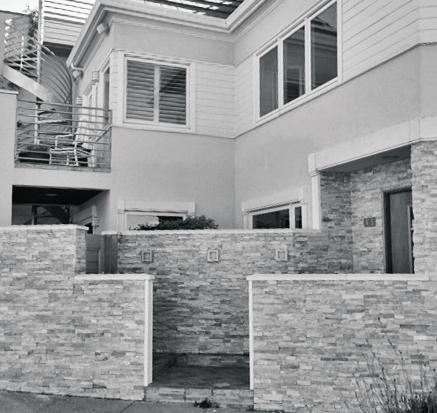


L ast spring there was a rash of car burglaries near the Potrero Hill R ecreation Center. A lull occurred over the summer, but “it’s started picking up because school has started up,” according to City staff who did not want to be named. Indeed, police statistics show that vehicle burglaries in the area served by the Bayview Station were up 26 percent during the first six months of 2013, compared to the same period in 2012. There were 140 vehicle burglaries in Bayview Station in May 2013, compared with 84 in May 2012. In June, the latest month for which data are available, 85 vehicle burglaries occurred in the area, compared with 88 in June of last year.
Over the summer police apprehended a suspect, who was tied to four car burglaries and a stolen bicycle. That arrest was made when officers attempted to stop the individual as he was riding a bike at night, and he dropped a loaded firearm. The suspect was wearing a distinctive shirt that was tied to one of the burglaries — in an earlier incident he had dropped stolen property and escaped from officers—and was in possession of items from other vehicle burglaries.
The Potrero Hill R ecreation Center is located at 801 Arkansas Street, near Starr King E lementary School. Thefts from vehicles focus
on electronic equipment, such as laptop computers. In September, a burglary victim lost an iPad after forgetting the device in the back seat of their car. City staff think the burglars have been working in teams of three people, with one thief acting as a lookout while another breaks the car window. “They know the routine,” staff said of the thieves. Upwards of 16 vehicles have been broken into near the Center during a single weekend.
According to Jennifer Serwer, a member of the newly-formed group
B ayview Station
Captain R obert
O ’Sullivan recommends that people place items in their car trunk before leaving their home or office and coming to the Center.
Friends of Potrero Hill R ec Center, when a woman recently held up her smartphone to take a picture of someone who appeared suspicious, the person ran away.
Bayview Station Captain Robert O’Sullivan recommended that people place items in their car trunk before

leaving their home or office and coming to the Center. City staff agreed that it’s important to put items in the trunk and out of sight before arriving, as it appears that the thieves are watching people get out of their cars. O’Sullivan also suggested that people lock their trunk release if they can, as thieves are breaking car windows and then using the release to steal items from that compartment. O’Sullivan said he hopes residents and Center visitors will report people that seem out of place. If someone is just standing on a corner, they might be looking to commit a crime, he said.
Starting with the new school year, Bayview Station police officers have been patrolling near Starr King, on foot or bicycle. And park patrol officer Mel Thornton is making regular rounds through the Potrero Hill Playground. Serwer called the auto burglaries “brazen” because they’ve been occurring in broad daylight. Since the criminals are working in teams, they are more bold, she said. She wants to make sure that the Center is safe for the many ten-year-old kids who come there with younger children without adult supervision.










